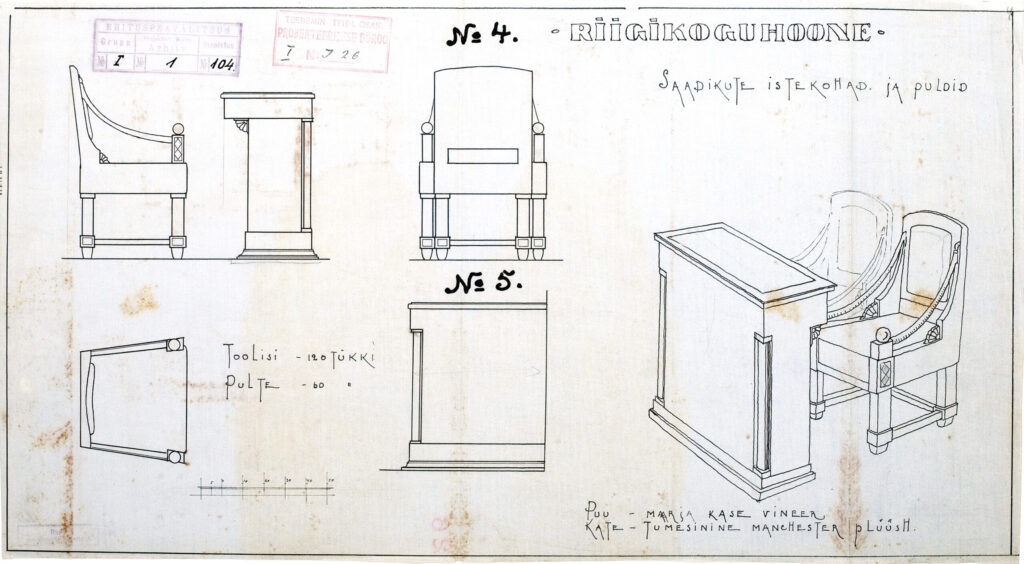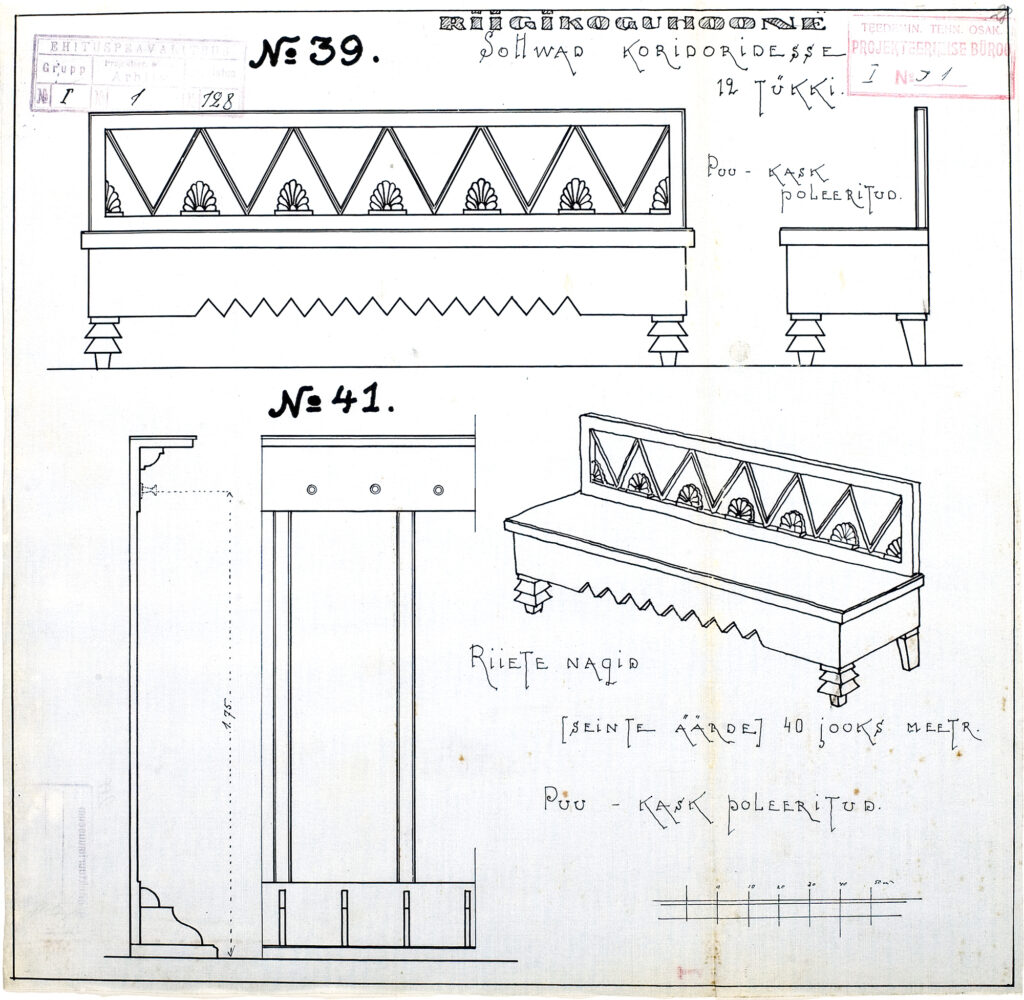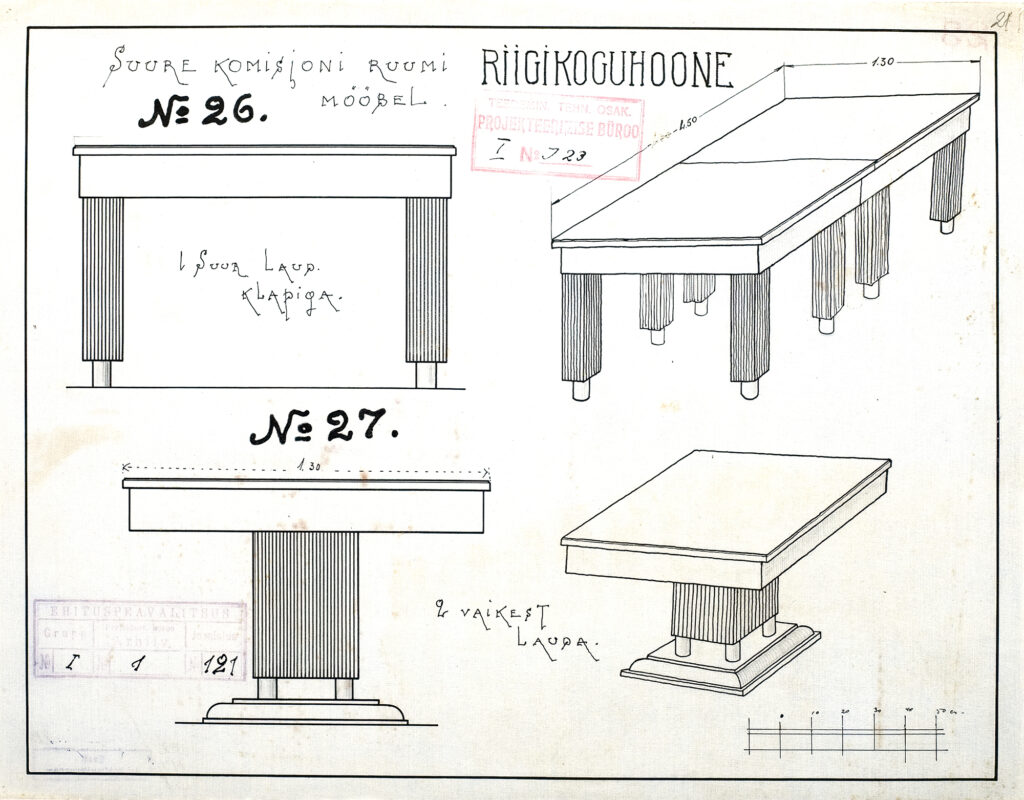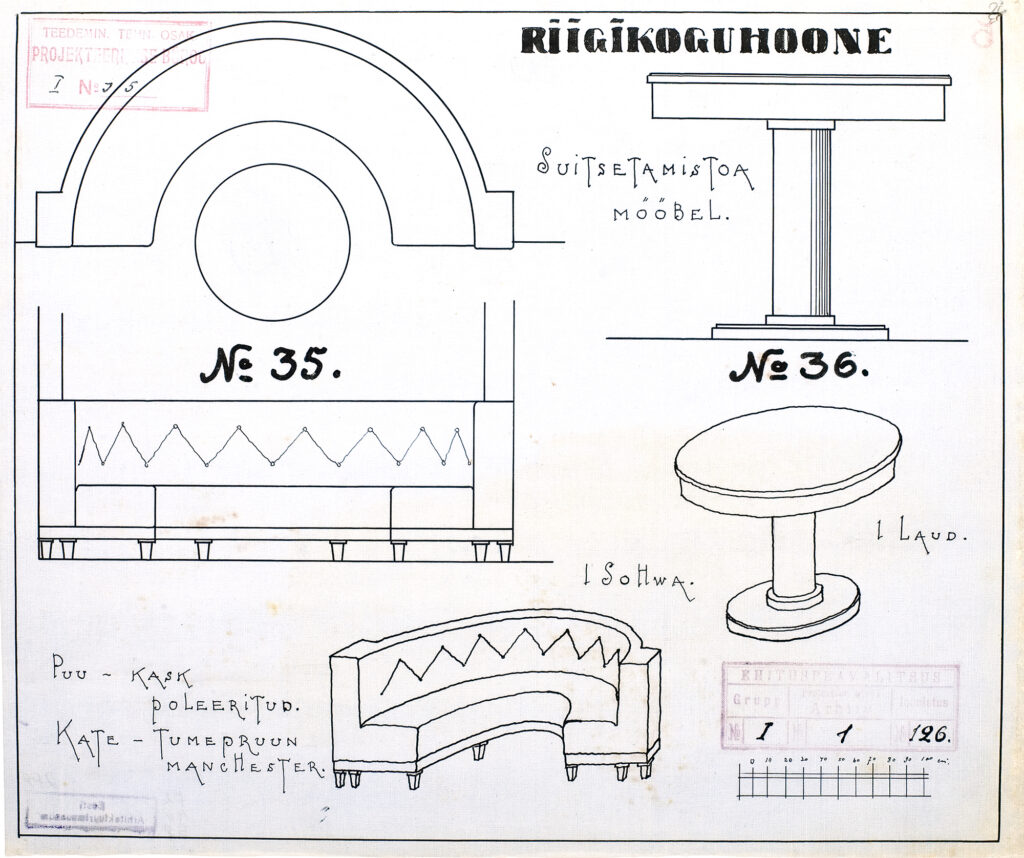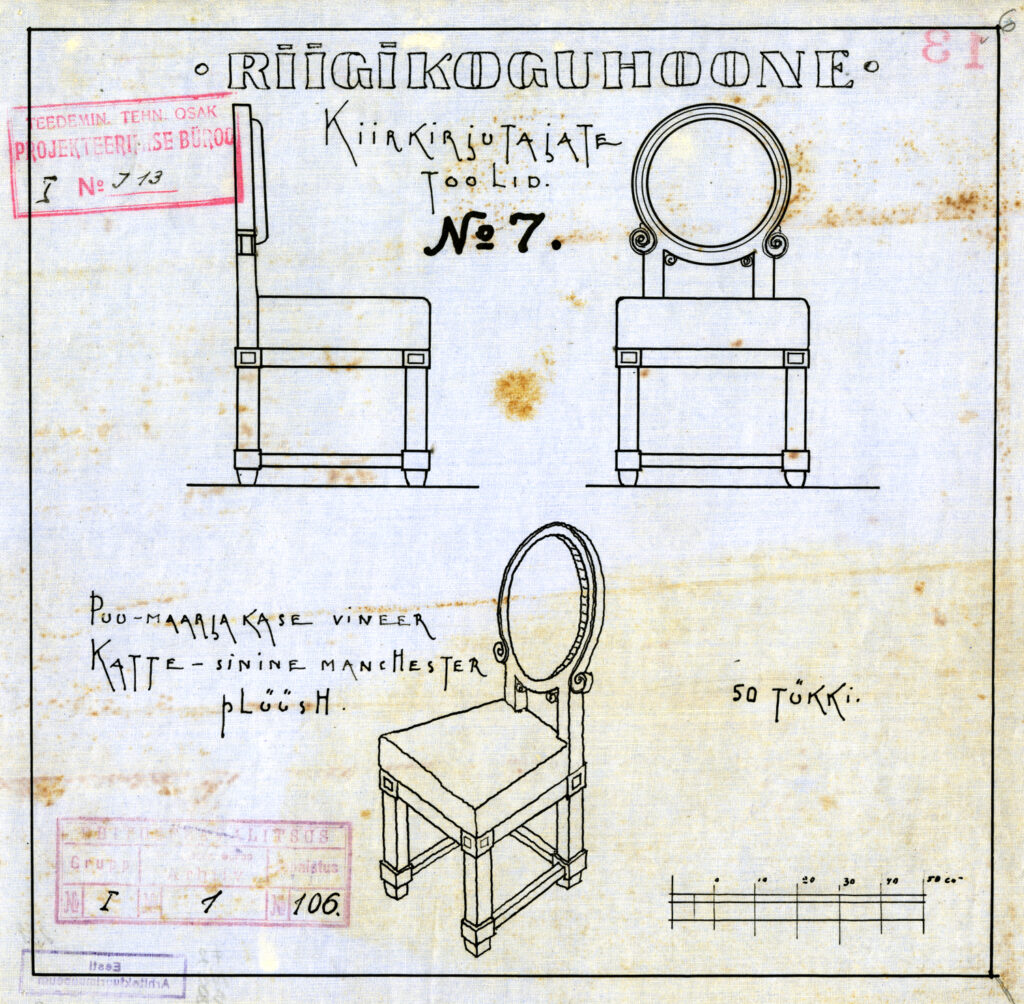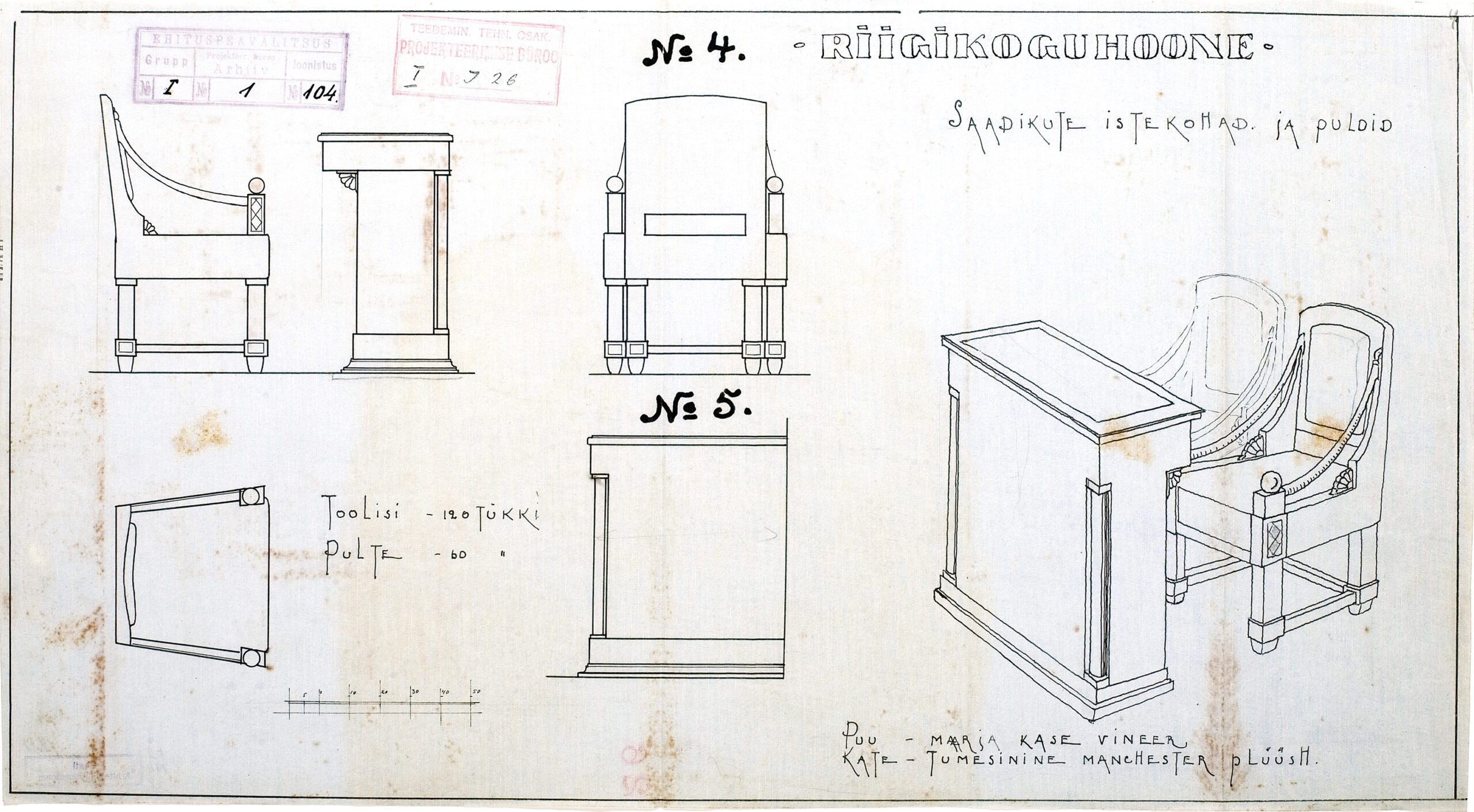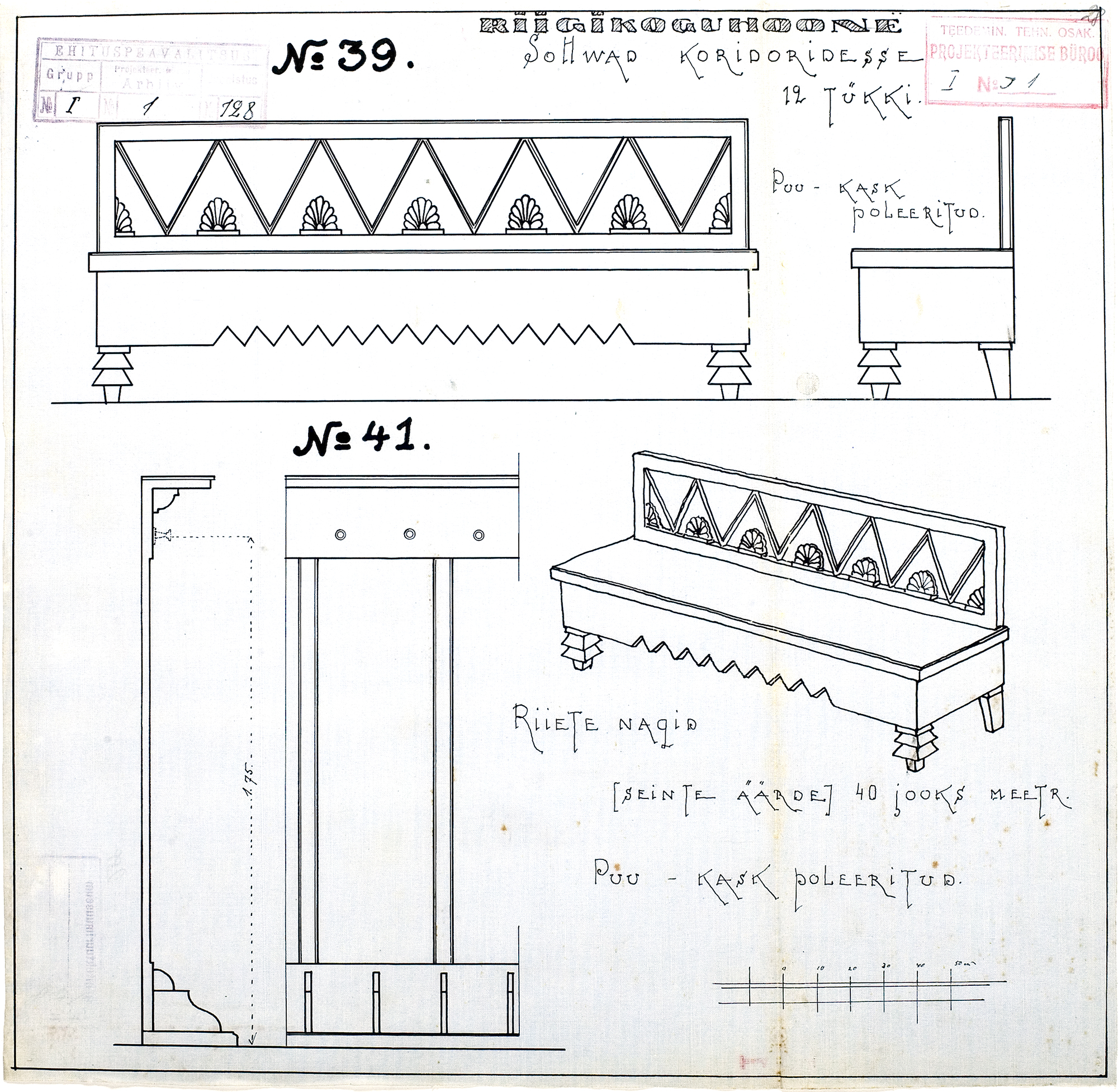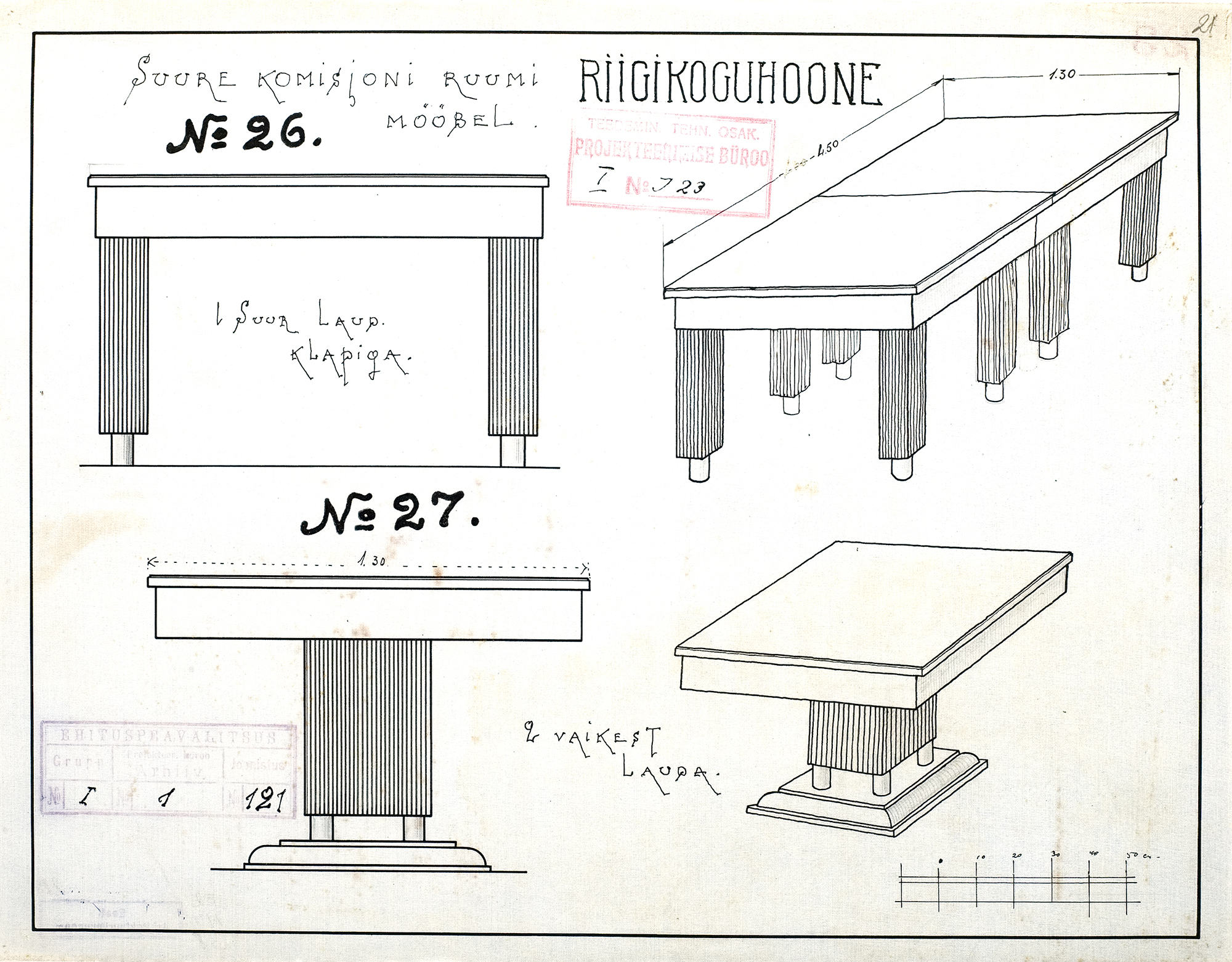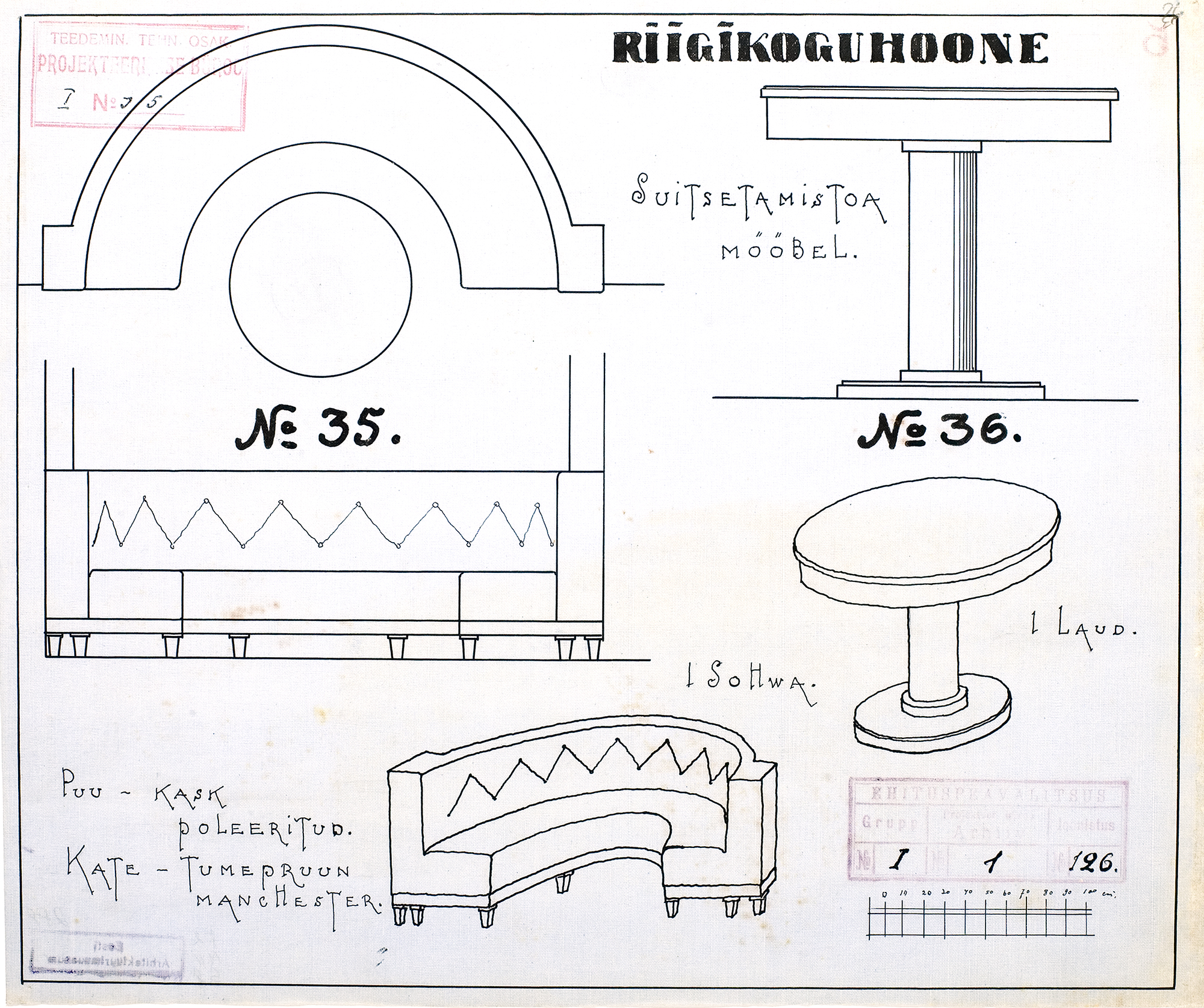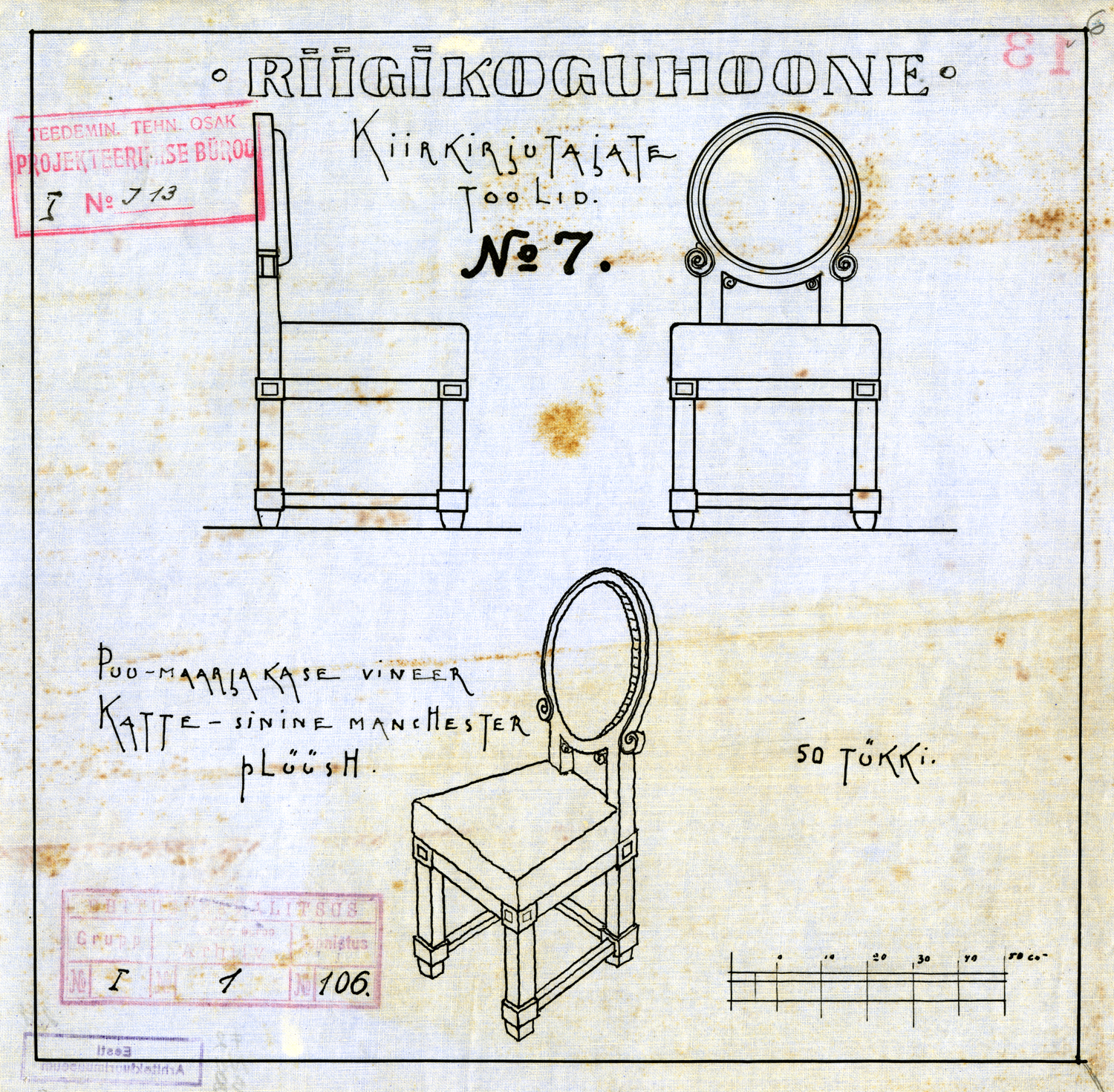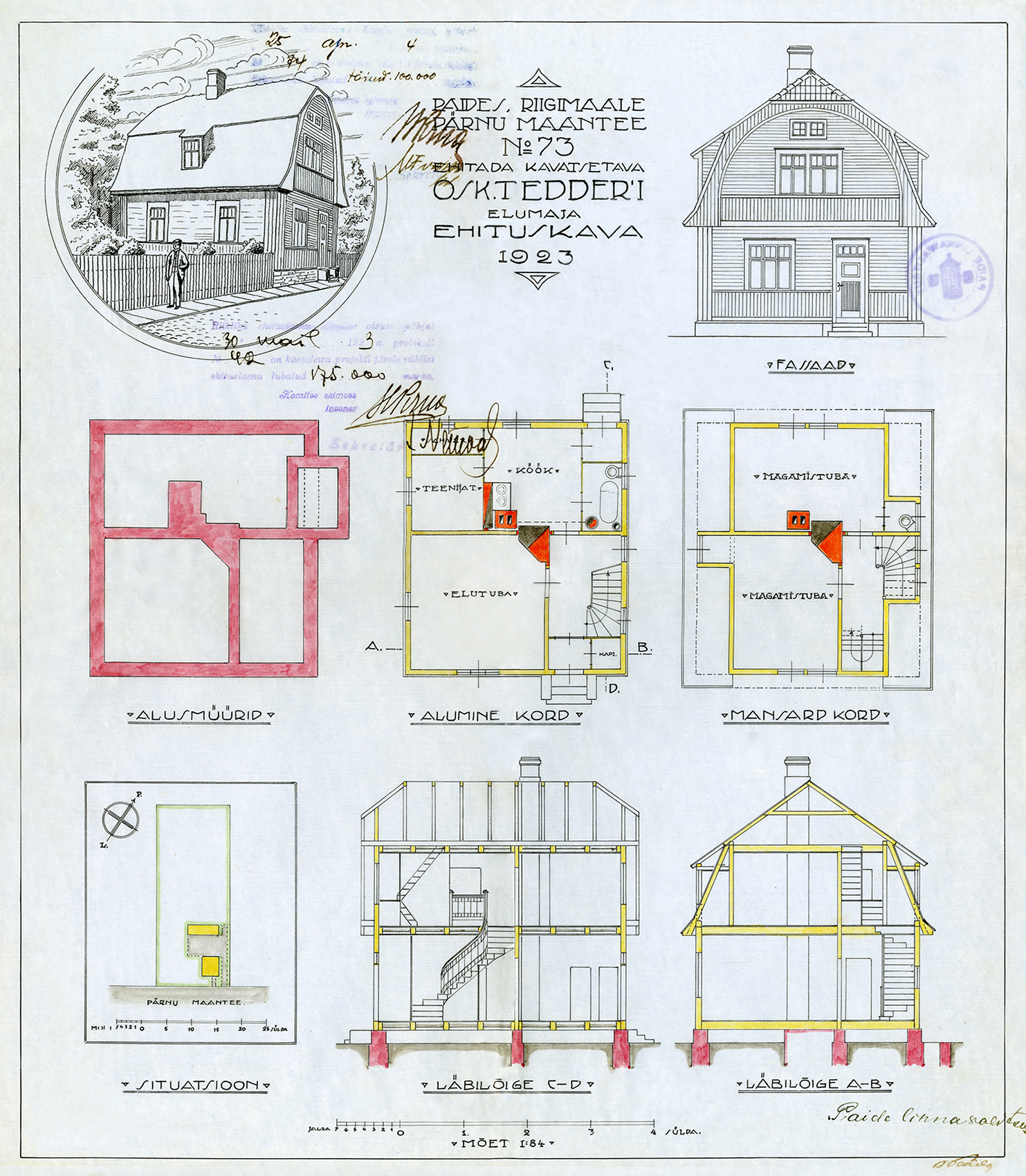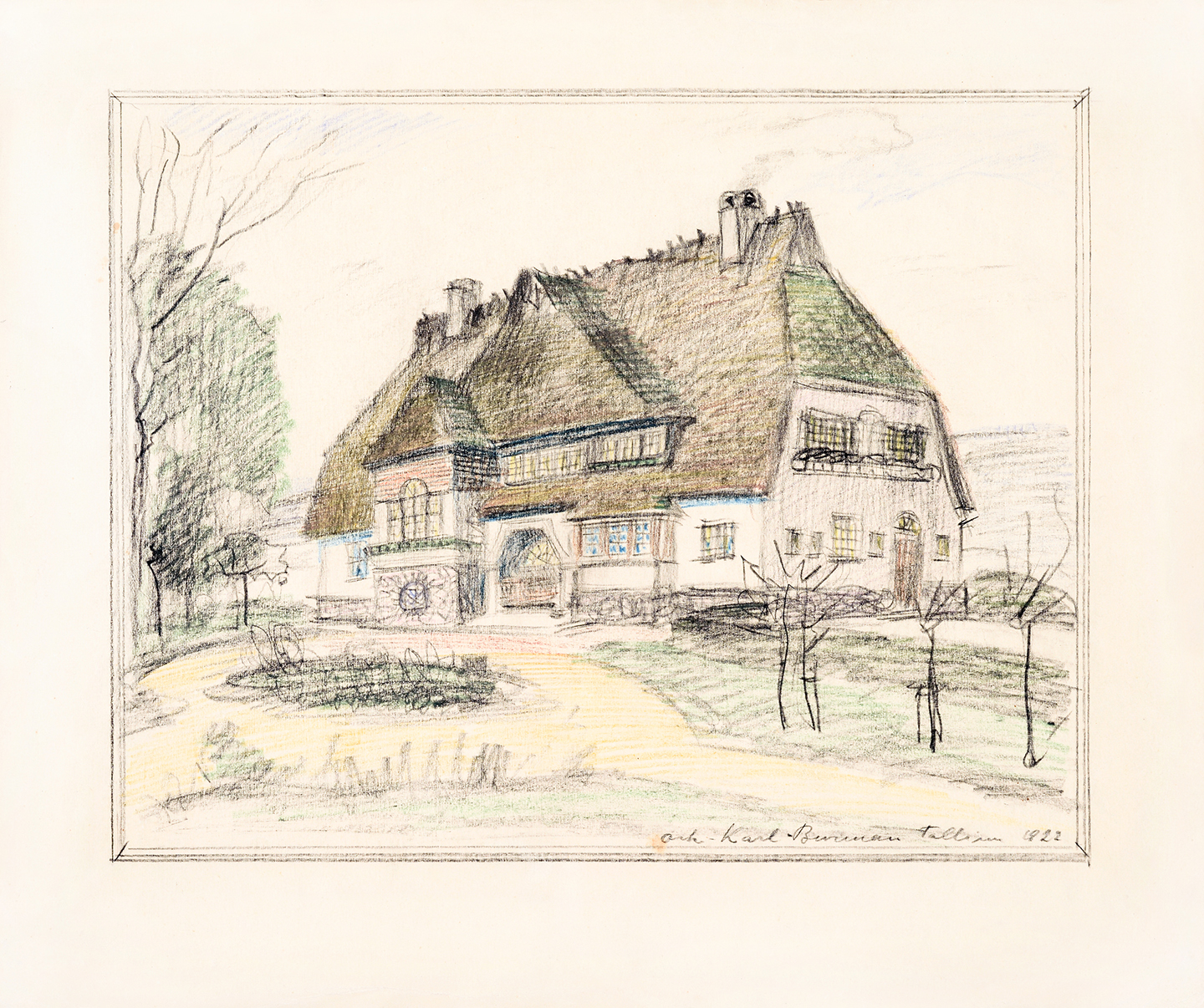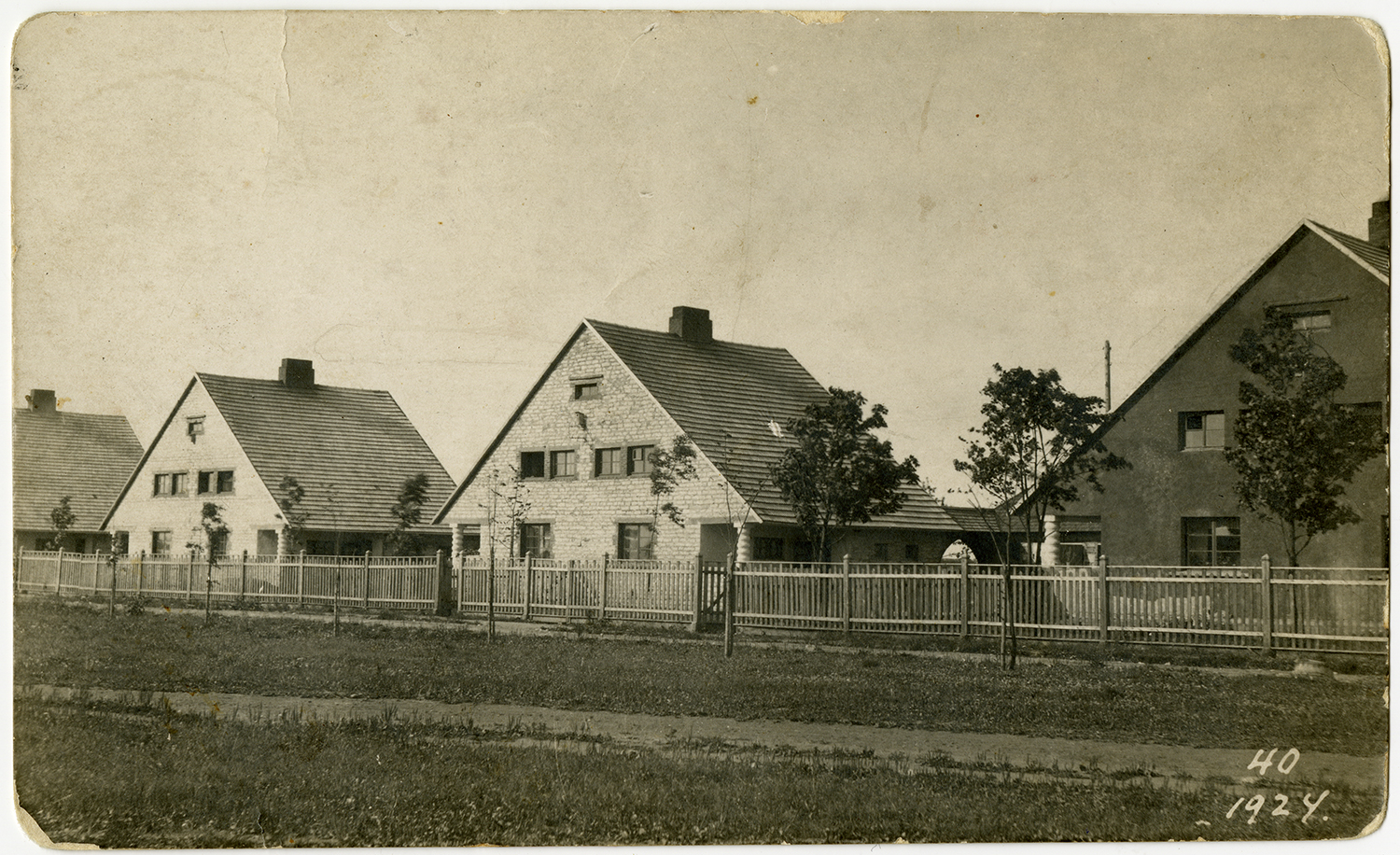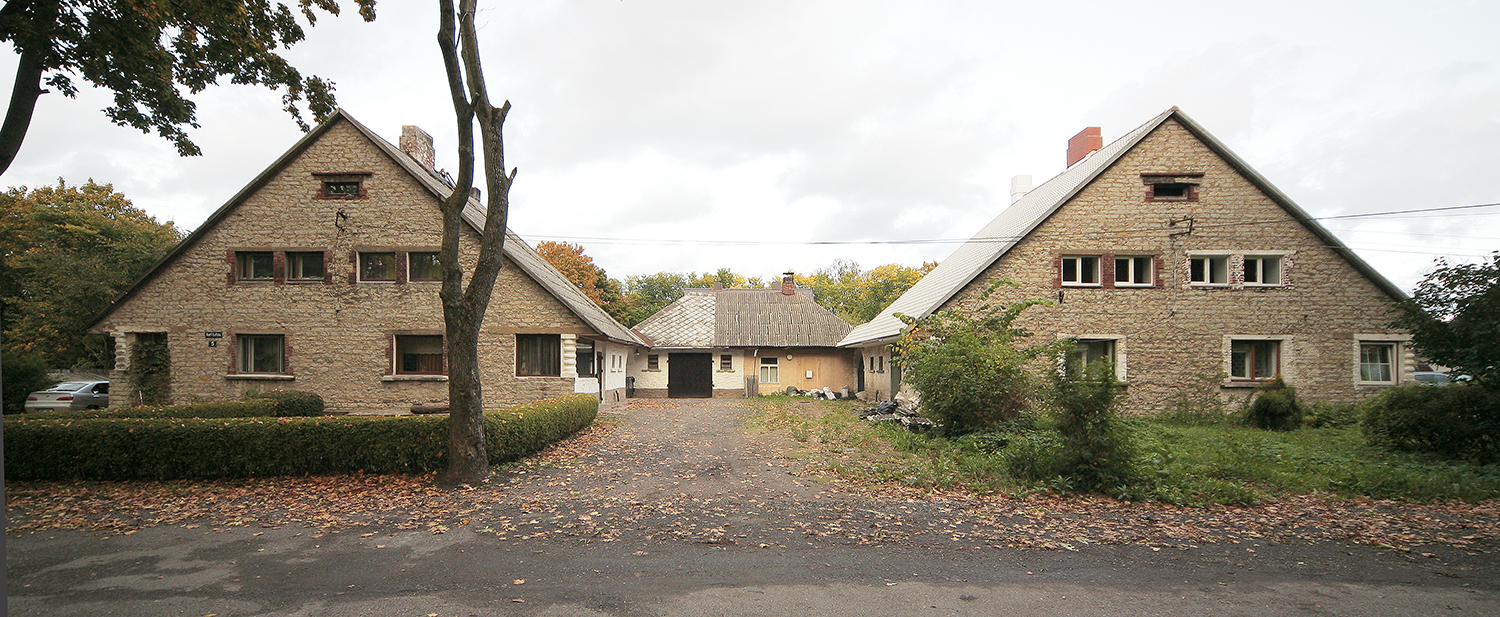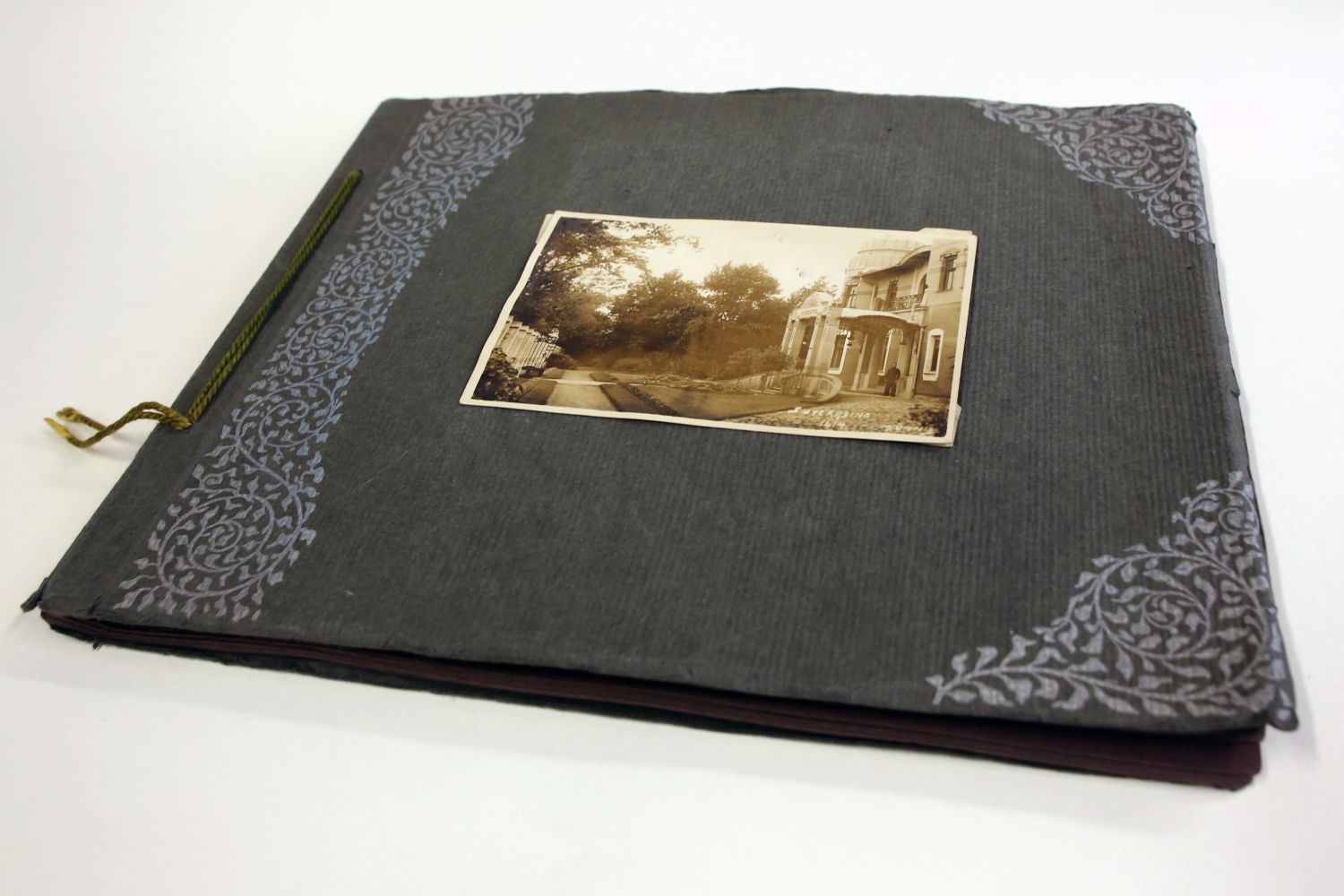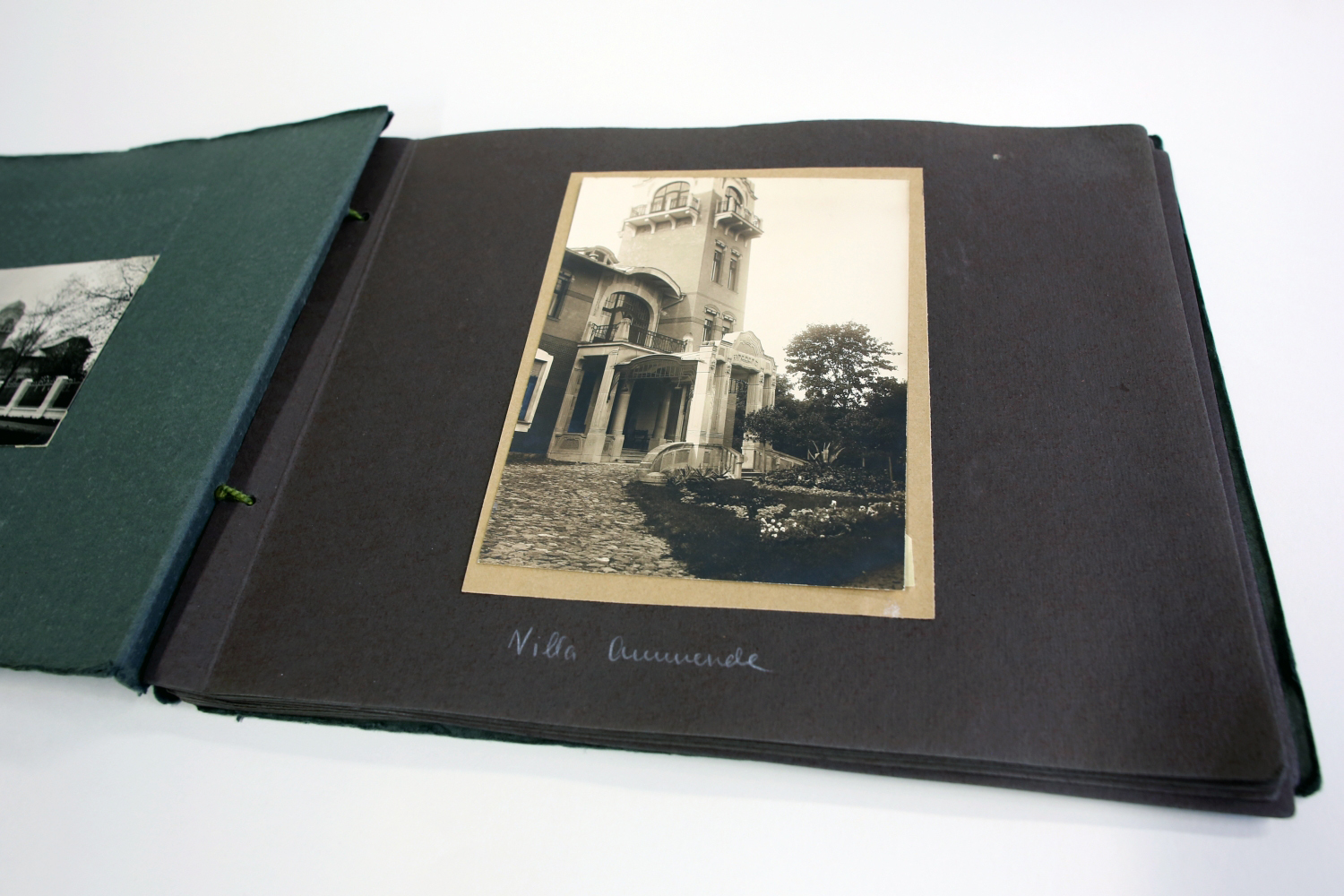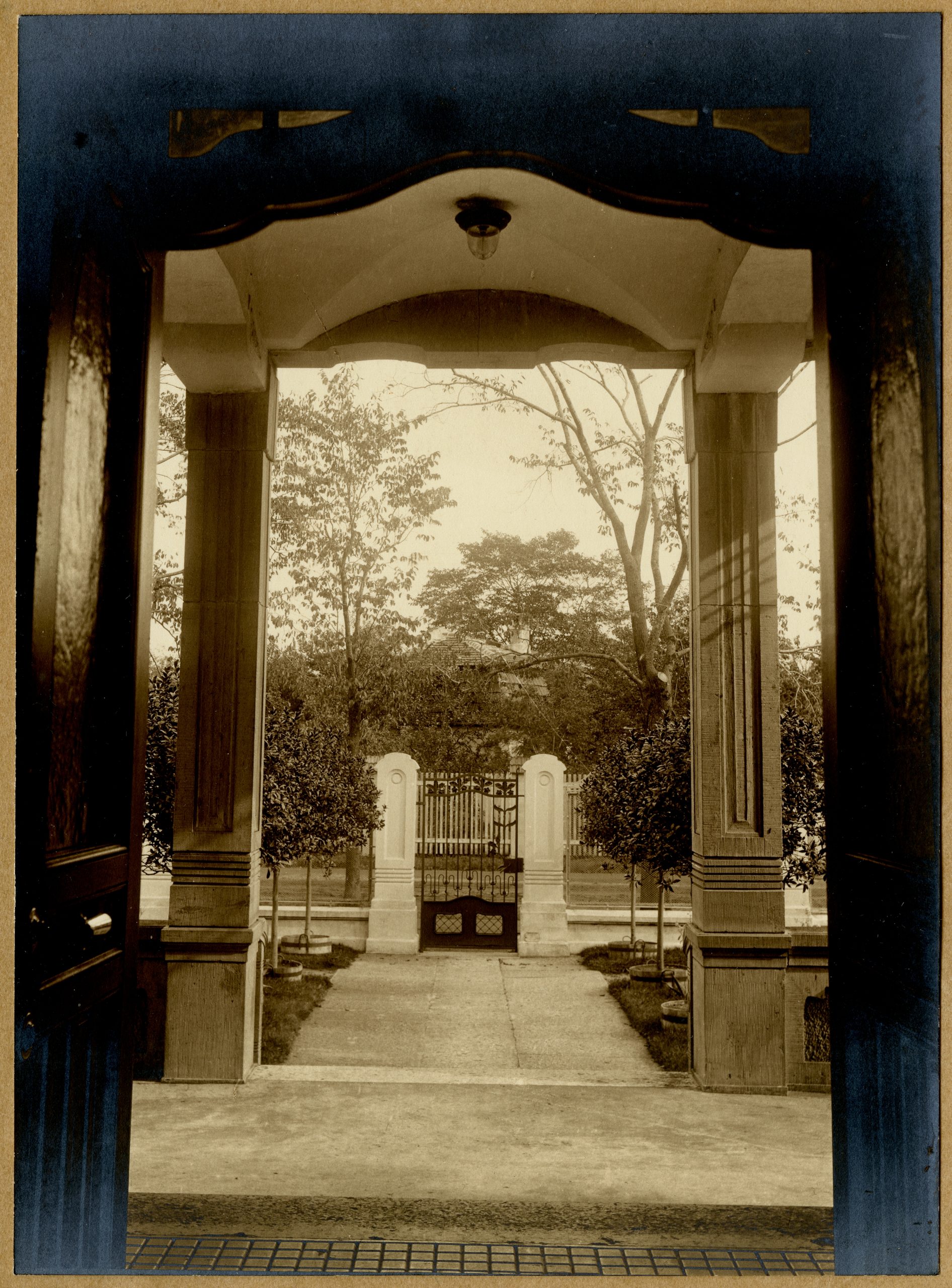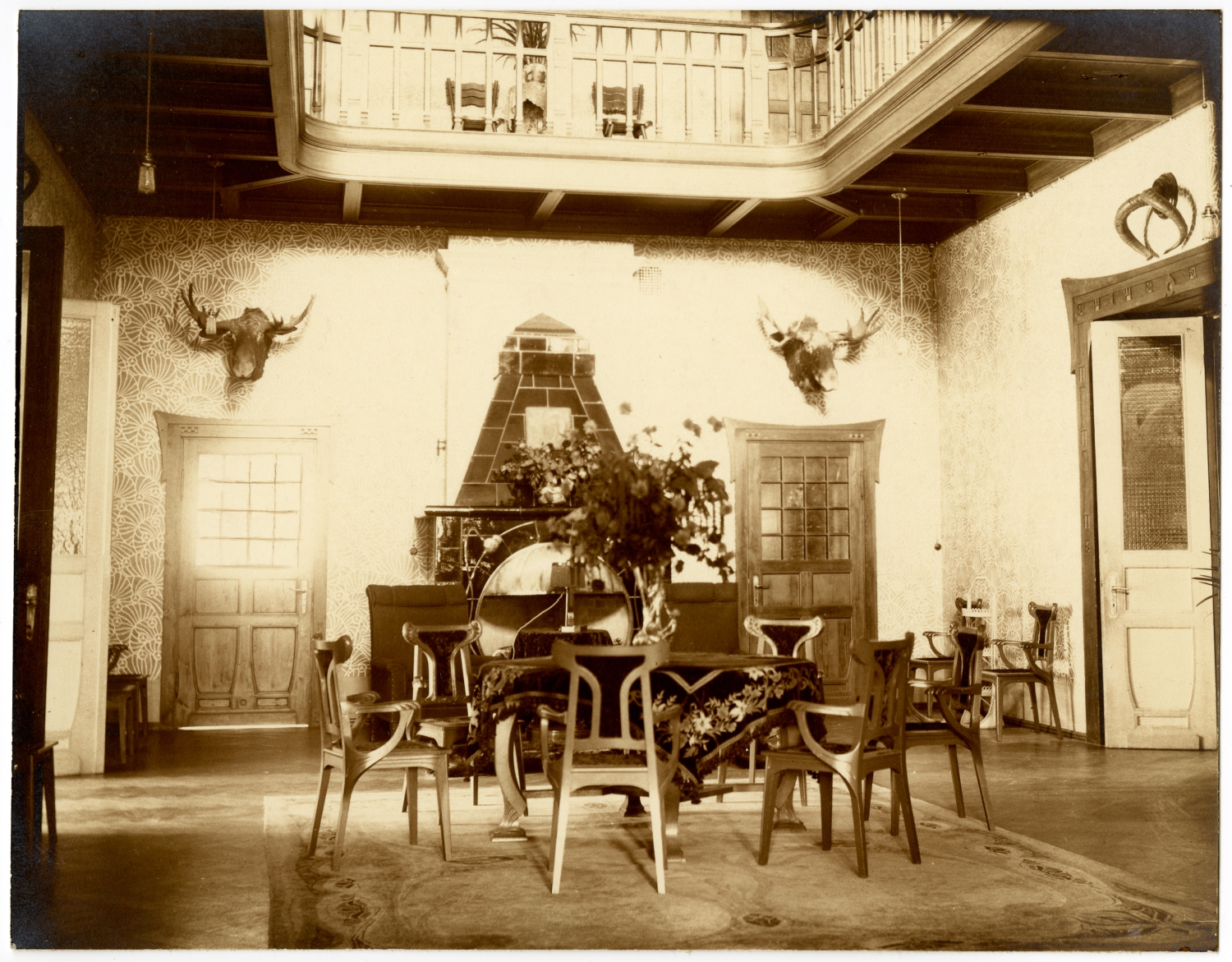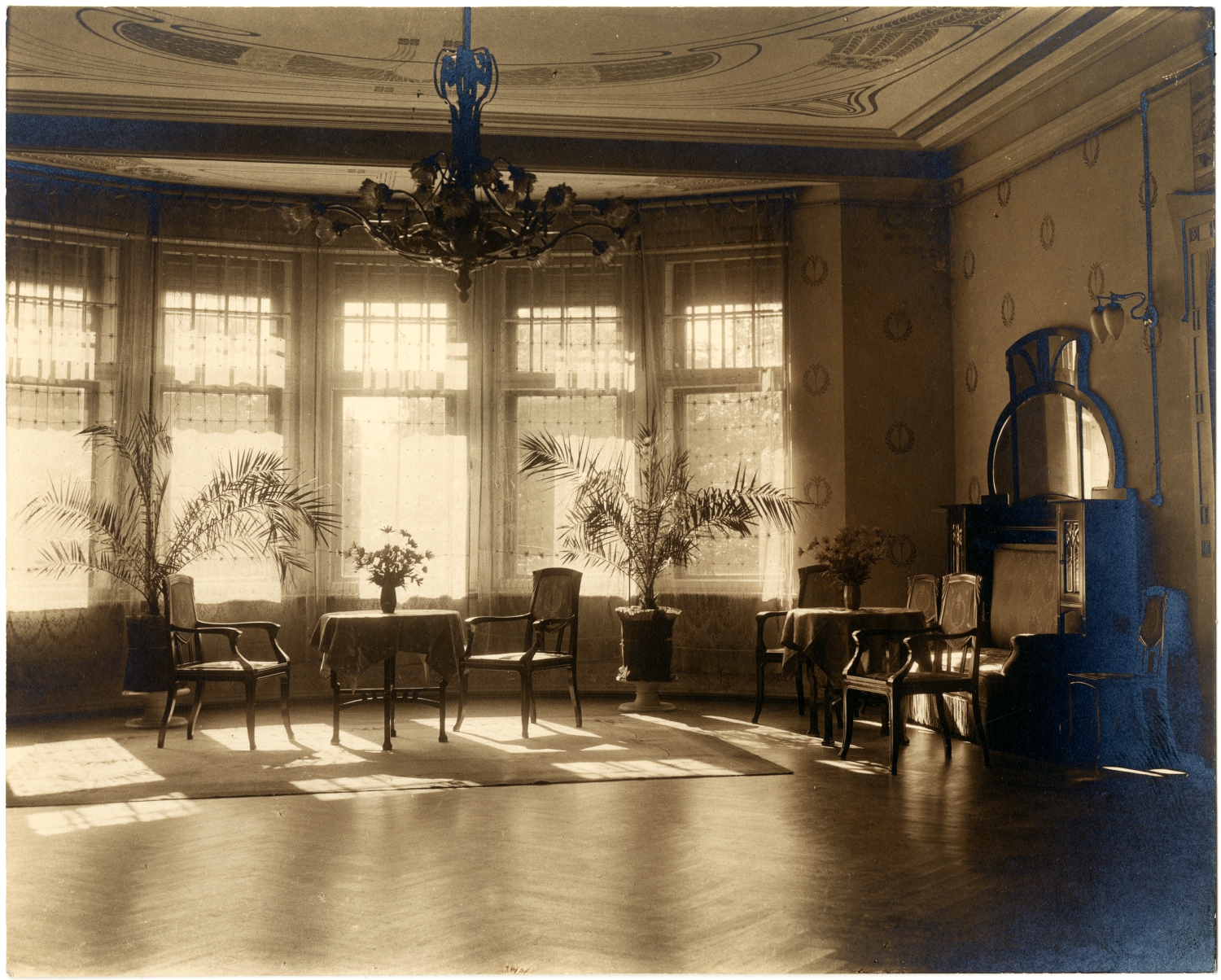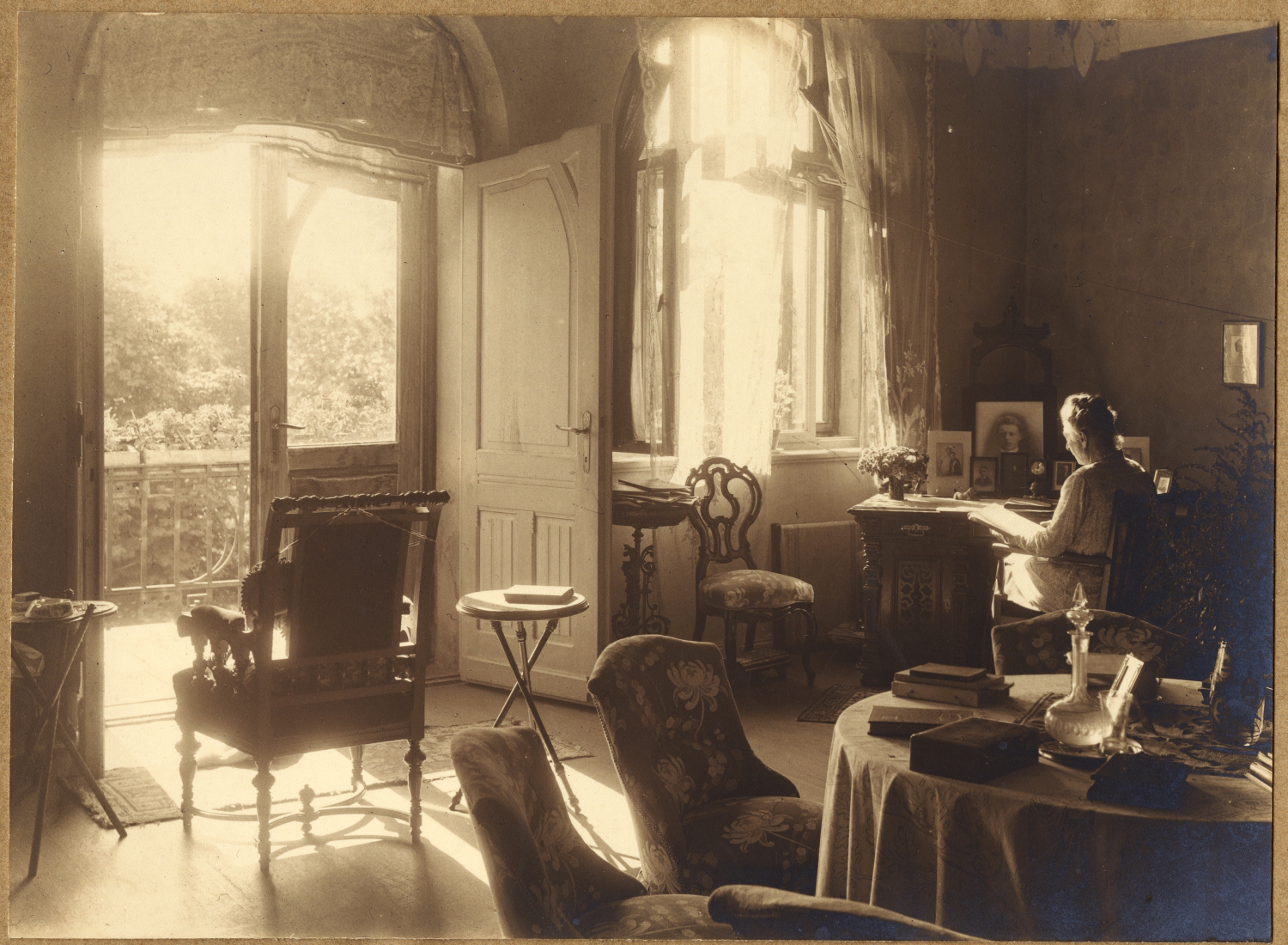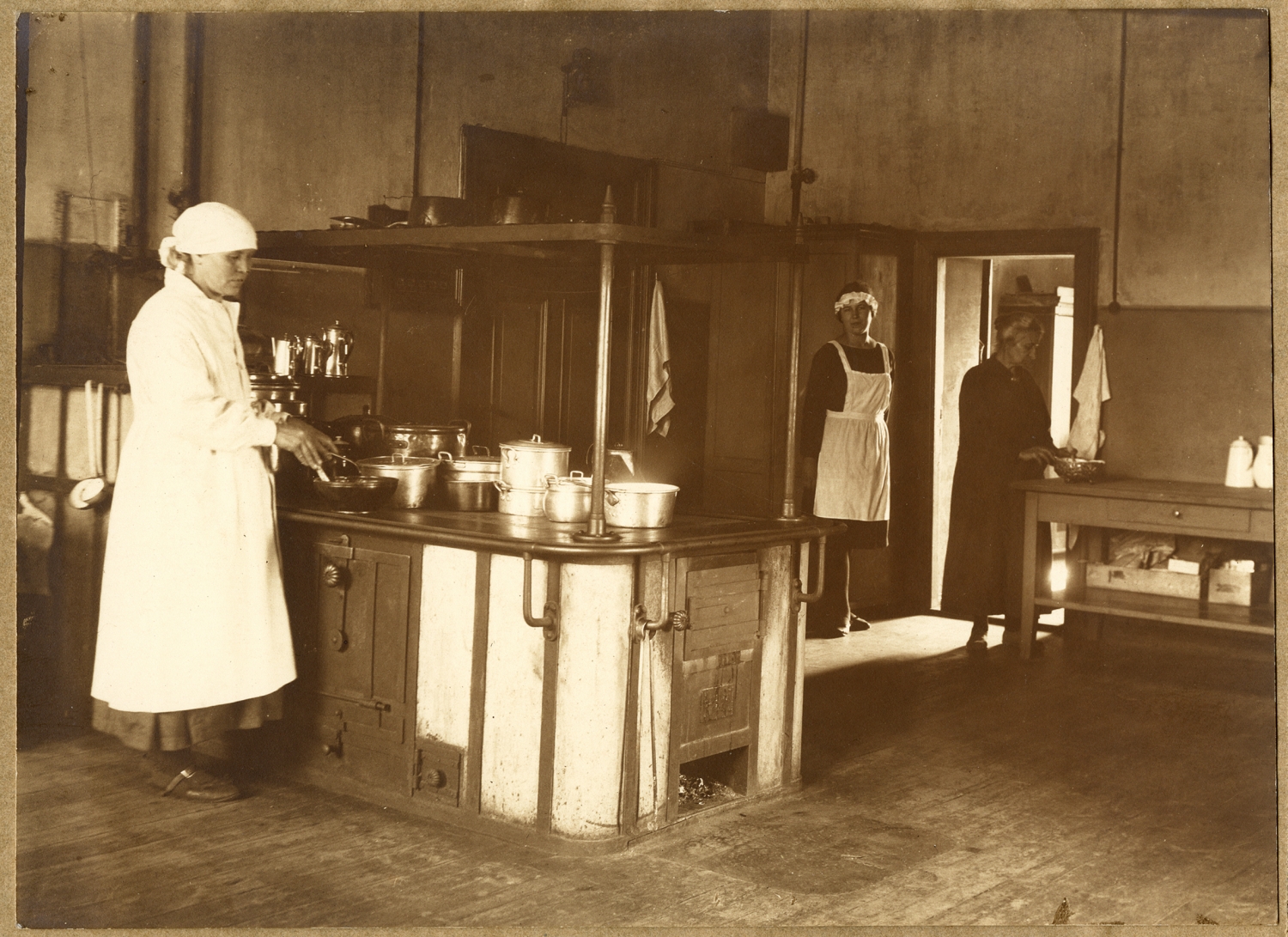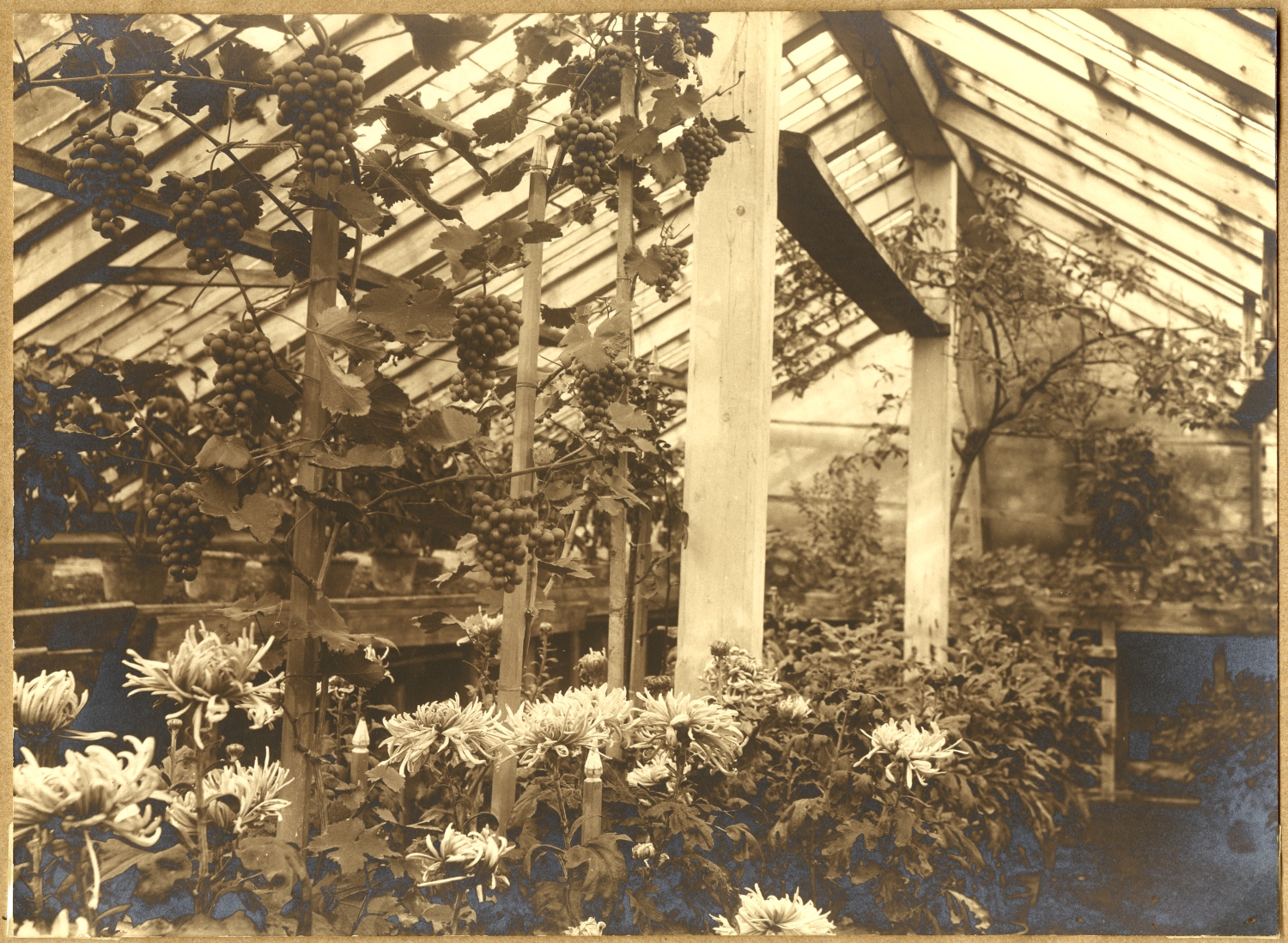Herbert Johanson, 1920-1922. EAM 2.11.8
The furniture designs of the Parliament building
In 1922, the most important state building of the newly independent Republic of Estonia – the new modern Parliament building (architects Herbert Johanson, Eugen Habermann 1920-1922) – is completed in Toompea. “It is a simple, yet self-conscious and distinctive building, which gracefully combines the individual sense of design of the authors and the fit with its medieval surroundings, while remaining modern.” This is how art critic Hanno Kompus characterised the Parliament building in his introduction to the book “20 Years of Building in Estonia: 1918-1938 “. Herbert Johanson’s designs were also used to create the unique furniture of the Parliament building, which repeats the geometric shapes of the building’s interiors and the Art Deco zigzag motif. The furniture was produced by the Luther factory, for whom it was the first major public commission (see Jüri Kermik. A. M. Luther 1877-1940. Innovation of form from material. Tallinn, 2002). The high quality of Lutermas’ work is demonstrated by the fact that most of the 100-year-old furniture is still in use today.
The museum has more than 30 furniture designs for the Parliament building, ranging from the podium in the sitting room to the coat racks. The original drawings come from the archives of the former Ministry of Roads and were transferred to the museum in 1992. Text: Anne Lass
(klick on the picture to see more)
-
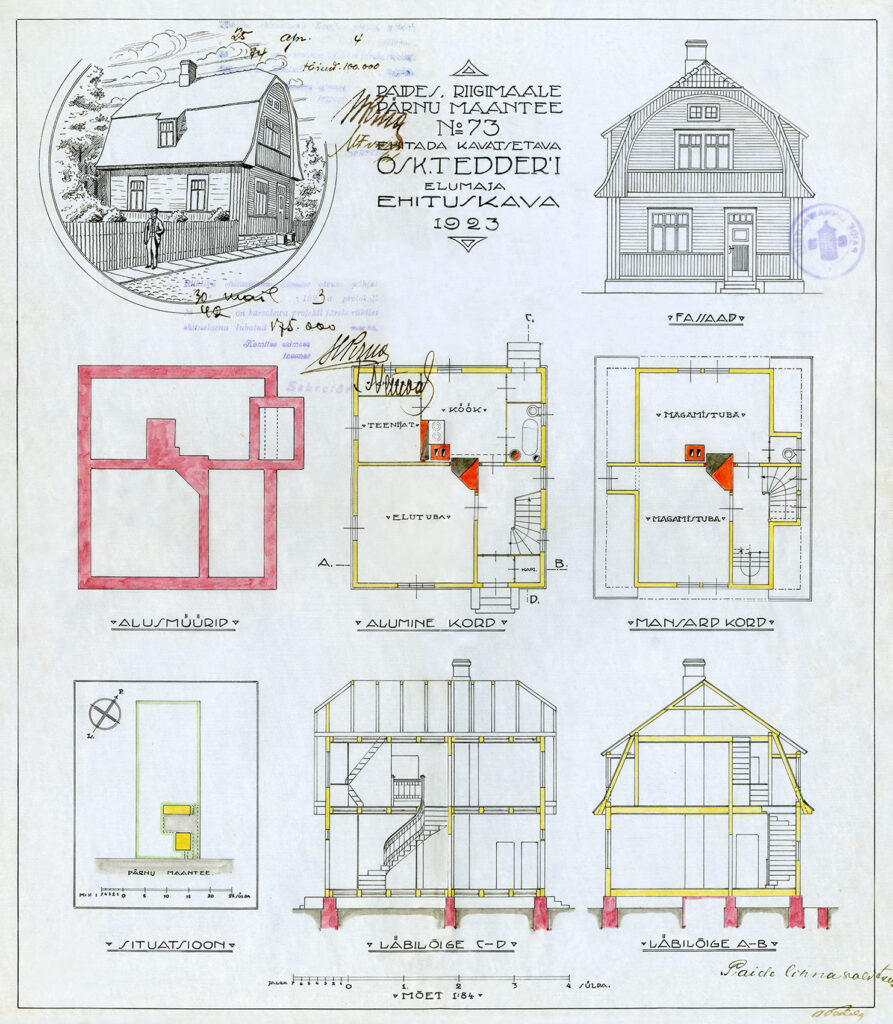
-
Residence in Paide
Residence in Paide
House in Paide
It was not overly common to commission house designs from a professional architect in the early 1920s, especially in towns and boroughs – designs were often made by building technicians and civil engineers. Compared to nowadays, the project seems unusually compact. One sheet would feature all the information about the house: views, floor plans, sections and every now and then a perspective view to please the client and show the general appearance of the future house. The house of Oskar Tedder who commissioned the project to acquire the building loan, was constructed on one of the main streets of Paide where the state handed out empty plots to establish a new garden city-like housing area. The project made in ink on the drafting cloth was added to the museum’s collection in 1992. Text: Sandra Mälk
-
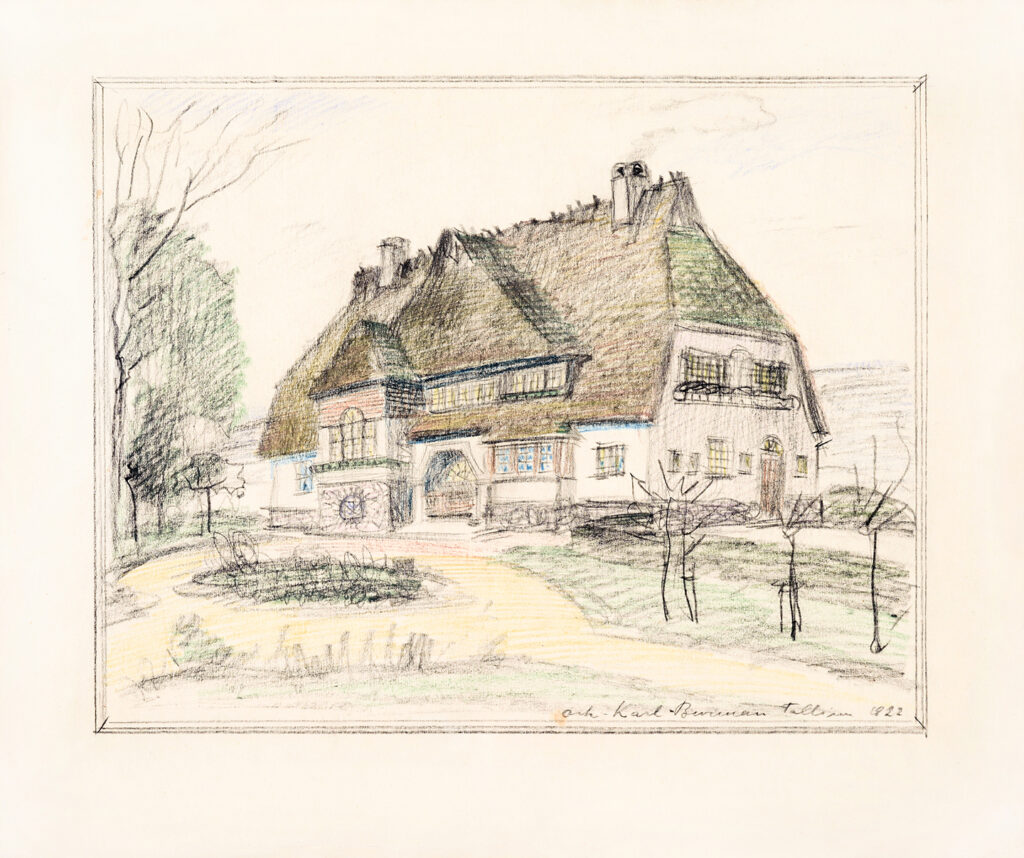
-
Drawing of August Hanko’s residence, 1922. Karl Burman
Karl Burman senior, 1922. EAM 2.2.695
Hanko’s house in Tartu County
The drawing depicts a dwelling in a farm in Kambja owned by journalist and entrepreneur August Hanko. At the time, Karl Burman favoured National Romanticism and drew inspiration from traditional Estonian farm architecture, using poetic elements to mitigate its practical nature. Burman’s oeuvre includes repeated elements in the form of bay windows, porches and a high-hipped thatched roof. Small grid windows of different sizes and shapes are also common to his work. As is characteristic to the style, Burman avoided excess practicality in the arrangement of space, placing a spacious hall in the centre of the layout and the living quarters surrounding it. The project was never realised.
Text: Sandra Mälk
-
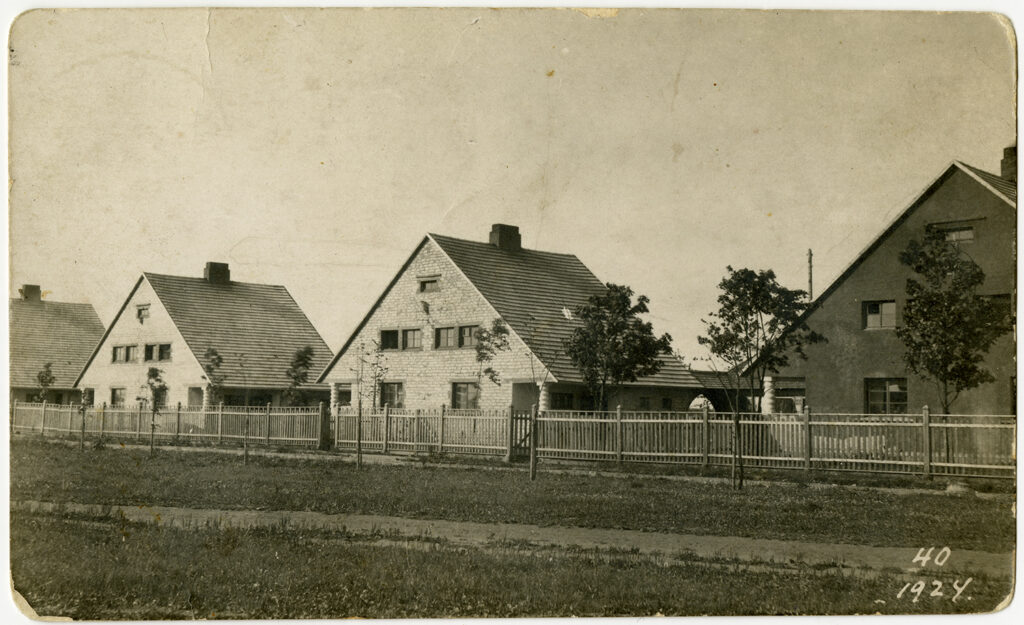
-
Workers´ housing in Kohtla-Järve, Eugen Habermann
-
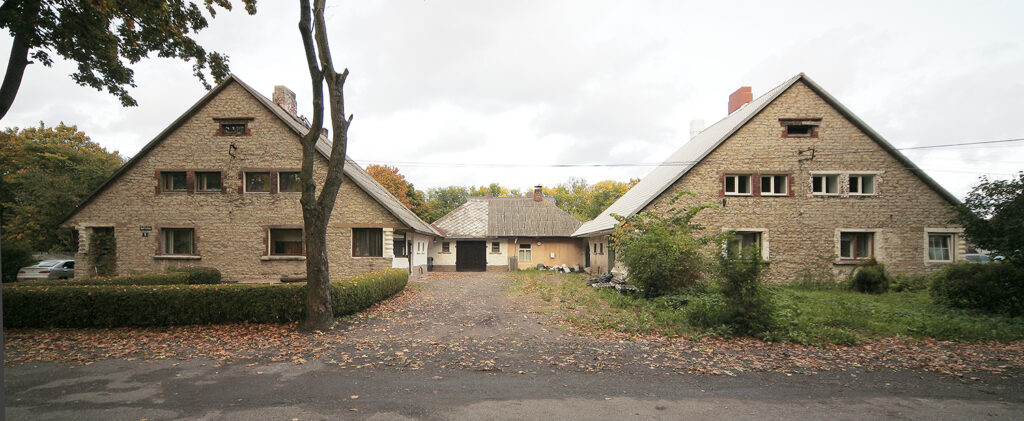
-
Workers´ housing in Kohtla-Järve, Eugen Habermann
Eugen Habermann, 1920–1921. EAM Fk 3105, Fk 15852
Workers´ housing in Kohtla-Järve
The Siidisuka neighborhood located in Kohtla-Järve has a garden city concept. The housing scheme was commissioned by the Estonian Oil-Shale Factory for its employees and built between 1920–21 according to the design of Eugen Habermann. This was one of the first urban concept in the life of the newly formed city. The name Siidisuka – which means Silk Stocking – shows the status of the habitats whom most were the leaders, engineers, and officers of the oil company and could afford buying silk instead of cotton fabrics to their family. The semidetached dwellings have unified concept with 4-5 different type of plans. The appearance of the houses are formed by the traditionalist trend and vernacular tendencies. In this case the architect blended the motifs of the modern architecture with characteristics of the local vernacular aspects such as the use of the rusticated limestone. The most characteristic elements are the precipitous sloping roofs and screwed pilasters. The buildings are linked with a perpendicular secondary house that divides inner and an external yard. The decorations on the façades, for example the typical zig-zag motifs show the influences of the architecture of the german expressionism. The photos were acquired by the museum in 1996 and new photos made by Martin Siplane in 2009 for the museum exhibition. Text: Anna Zsoldos
-
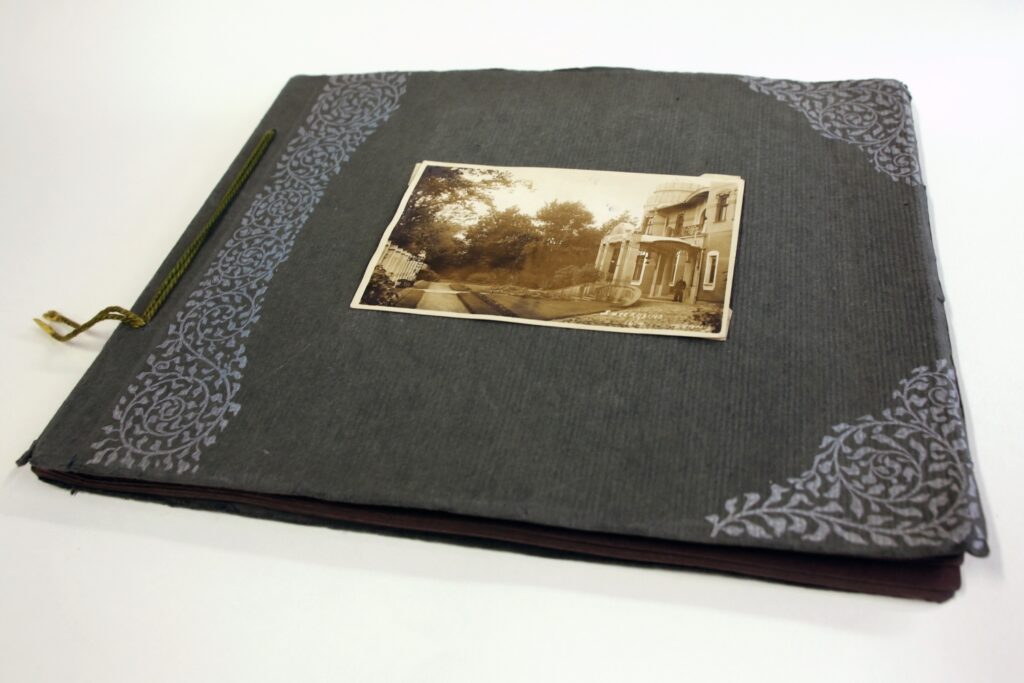
-
Photo album of Villa Ammende
-
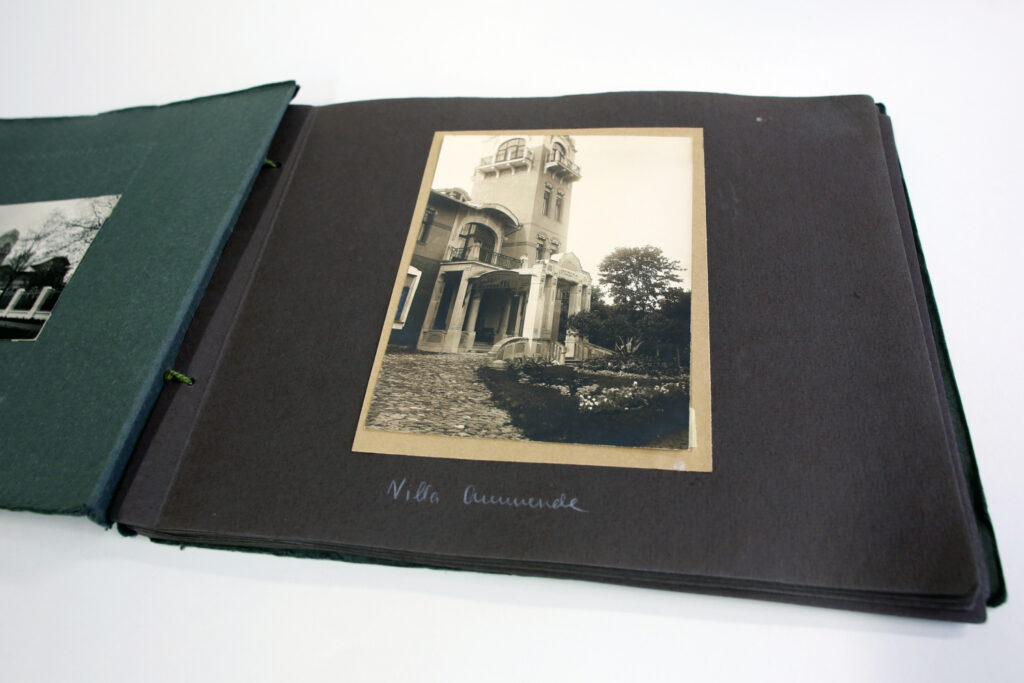
-
Photo album of Villa Ammende
-
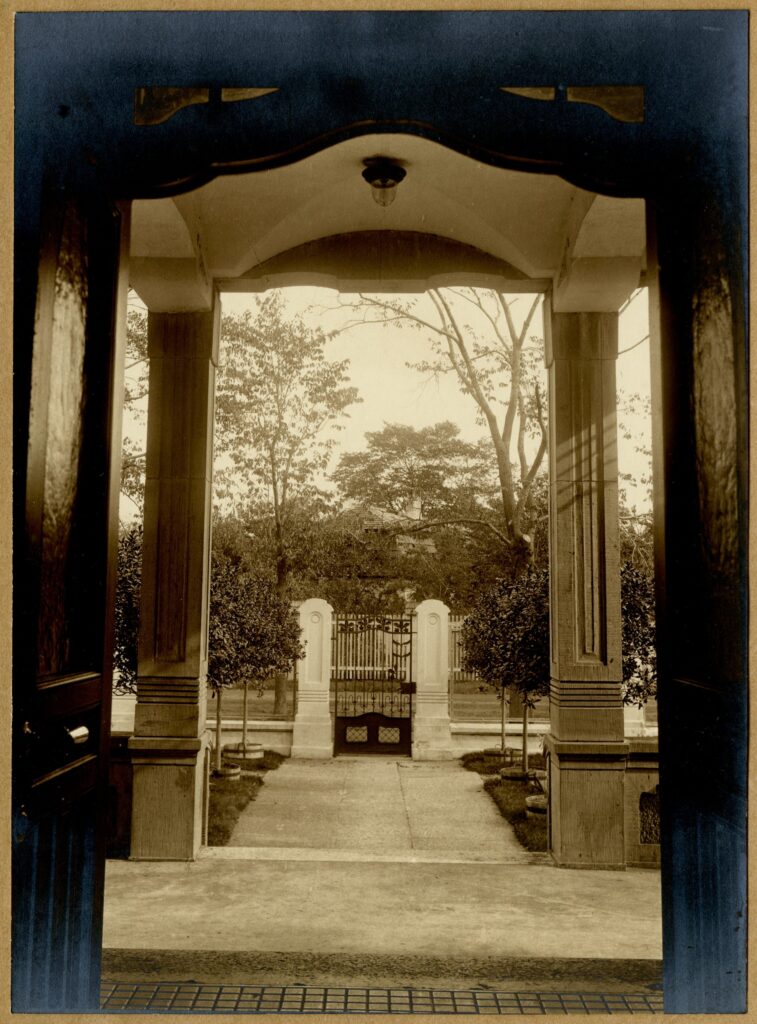
-
Photo album of Villa Ammende
-
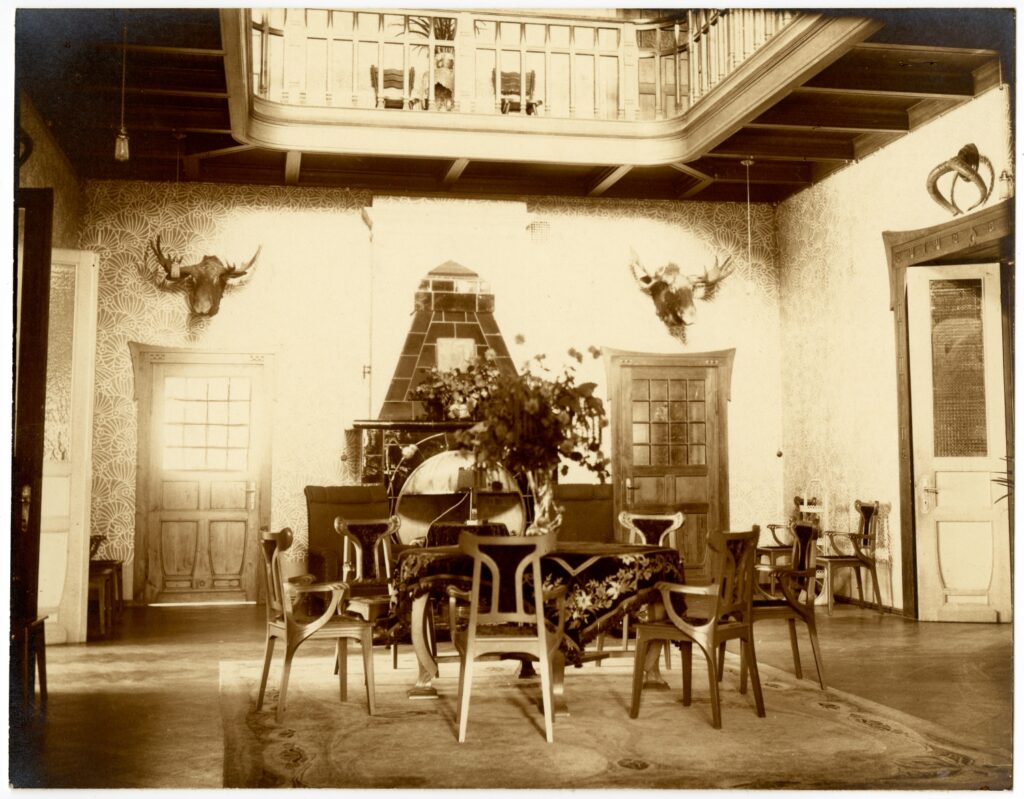
-
Photo album of Villa Ammende, the hall
-
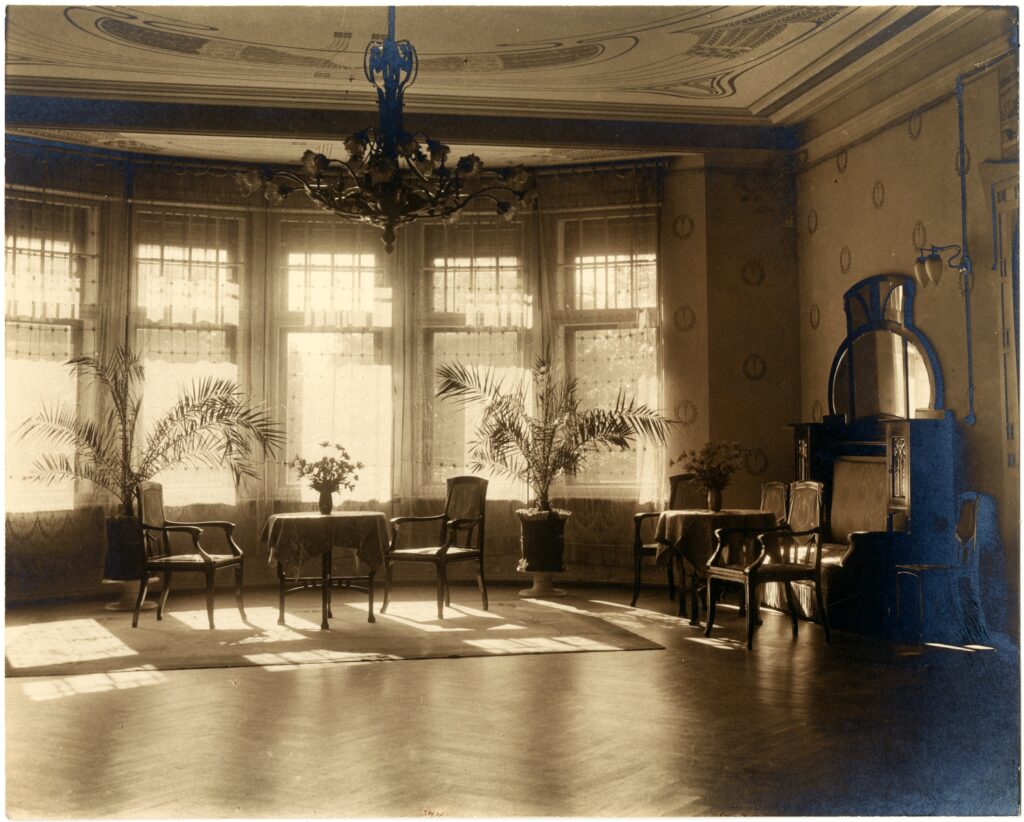
-
Photo album of Villa Ammende
-
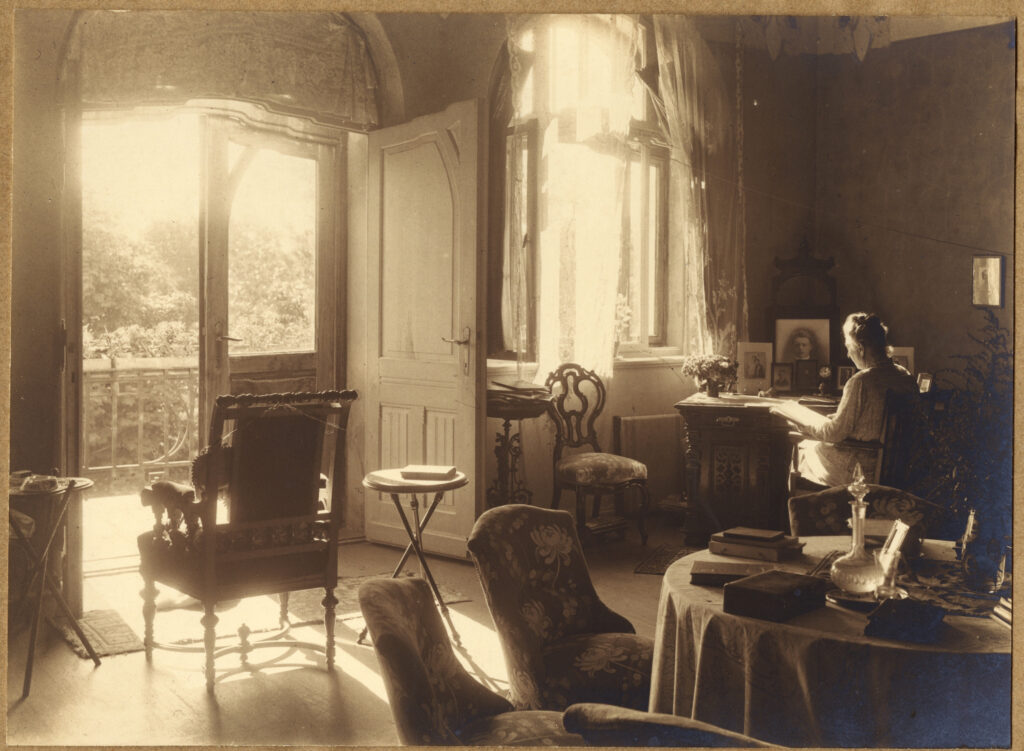
-
Photo album of Villa Ammende
-
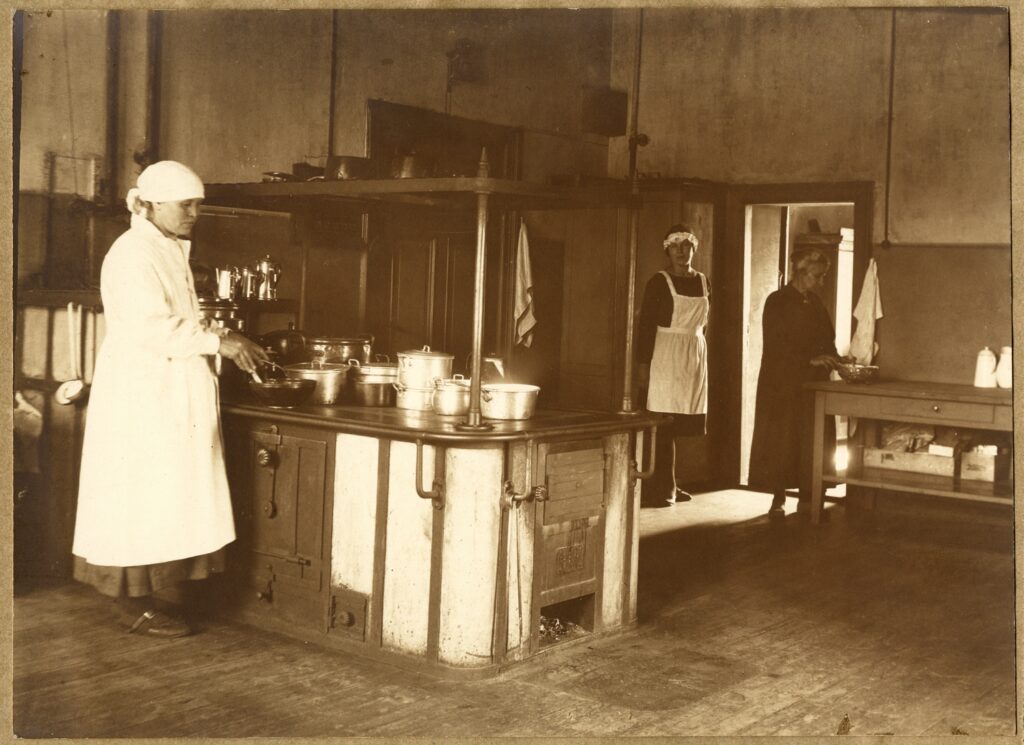
-
Ammende villa photo album, the kitchen
-
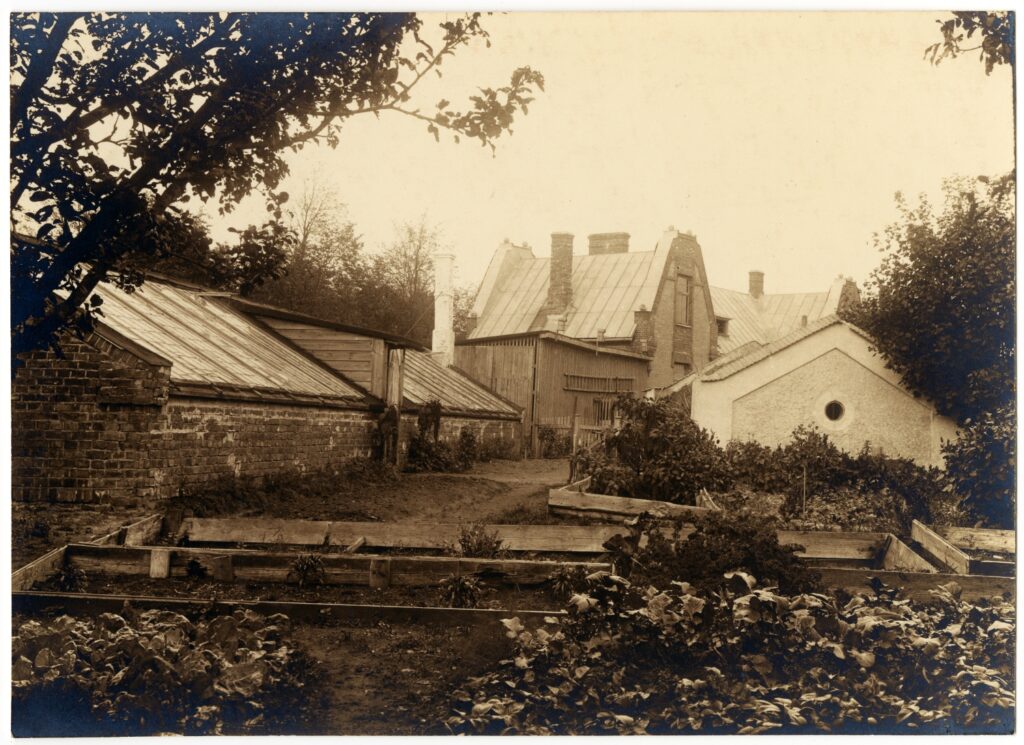
-
Photo album of Villa Ammende, vegetable garden
-
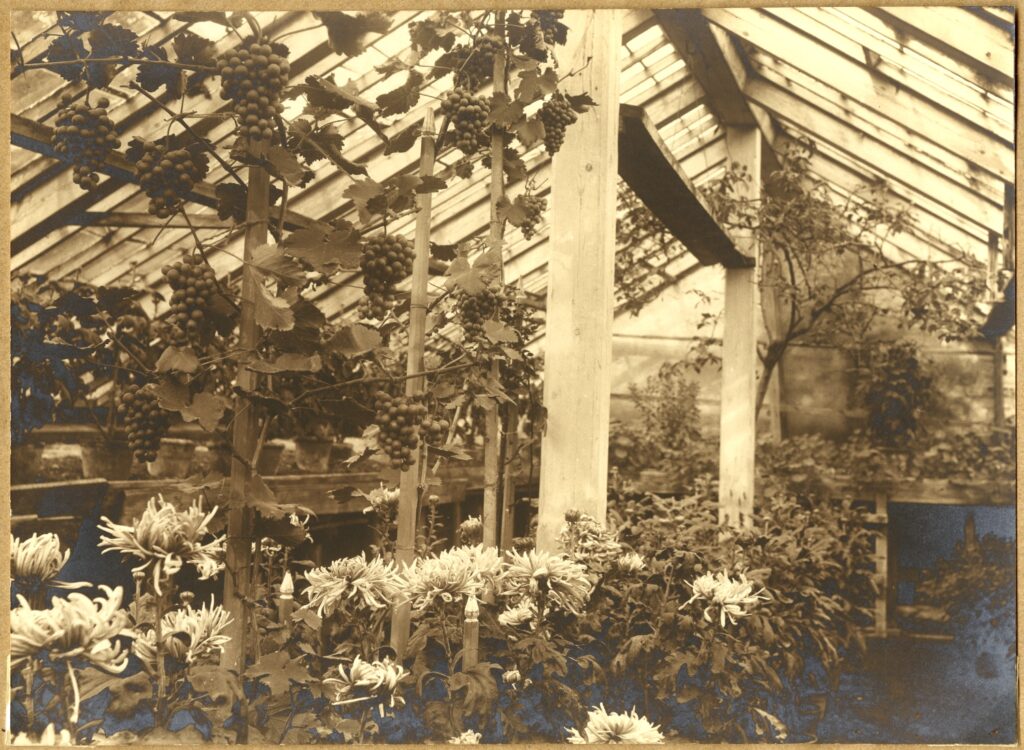
-
Photo album of Villa Ammende
Harald Krannhals, 1926. EAM 1.2.43
Album of Villa Ammende
The newest addition to the museum collection is related to the well-known Art Nouveau villa in Estonia. The album of Villa Ammende in Pärnu (architect Frithiof Mieritz, 1904) is exceptional not only for its photos of large variety of exteriors and interiors but as well as for some of the pictures taken from unusual places such as the kitchen with its staff, backyard and greenhouse depicting fruity grapes. The album shows the life and living manners of the family of a prosperous merchant displaying splendid furniture, textiles and items.
The album, lately owned by Irina Mirkov – the grandchild of Hermann Leopold Ammende – was put together for selling the house. Mr Ammende, an established merchant from Pärnu, commissioned the building from an architecture office in St Petersburg called Mieritz & Gerassimov for the wedding party of his daughter Ellen. After the festivities, the family used the luxurious house as a summer cottage until moving back to Germany in 1927.The pictures taken in 1926 are made by Harald Krannhals, the photographer from Pärnu. Addition to his work are pictures taken by Mihkel Õnnis some years later. Altogether 21 photos show some typical deteriorations happen in time. The dim areas of the photos have spots of silver coating. The album was given to the museum by Aivar Roosaar, who was involved in restoration of the villa (1995–1999). The gift shall be a befitting addition to the original project previously given to the museum (EAM 1.2.11). Text: Sandra Mälk
(click on the picture to see more)
Anatoli Podtšekajev, 1924. EAM 2.2.249
Residential building in Tartu Tamme district
The architect Anatoli Podtšekajev, born in 1879 in the town of Opochka in the Pskov region, has left a unique mark on Tartu’s architectural history. Podtšekajev began his architectural studies at the Warsaw Polytechnic Institute. After the closure of the institute in 1905 and a subsequent break of a few years, Podtšekajev continued his studies at the Riga Polytechnic Institute, from which he graduated in 1910. Studying in two different schools and two different cities is probably the reason for the architect’s somewhat searching style, which seemed old-fashioned at the time. The architect moved to Tartu in the early 1920s, where he soon took up the post of city architect. Podtšekajev designed a number of residential buildings in the Tamme district, but buildings designed with his participation can also be found in other areas of Tartu. The four-apartment house in Tammelinn, which belonged to Mihkel Puusepp, is a building with a peculiar layout. On the ground floor, there are two two-room apartments with separate kitchens, a storage room and a hallway. On the upper floor, there are two one-bedroom apartments. Each apartment has a toilet. An interesting feature of the project is the two adjacent staircases in the middle of the building, one accessible from the street and the other from the courtyard. Consequently, there are two separate entrances to each apartment, one leading to the entrance hall and the other to the kitchen. Architectural historian Robert Treufeldt has thoroughly researched the life and work of architect Anatoli Podtšekajev.




